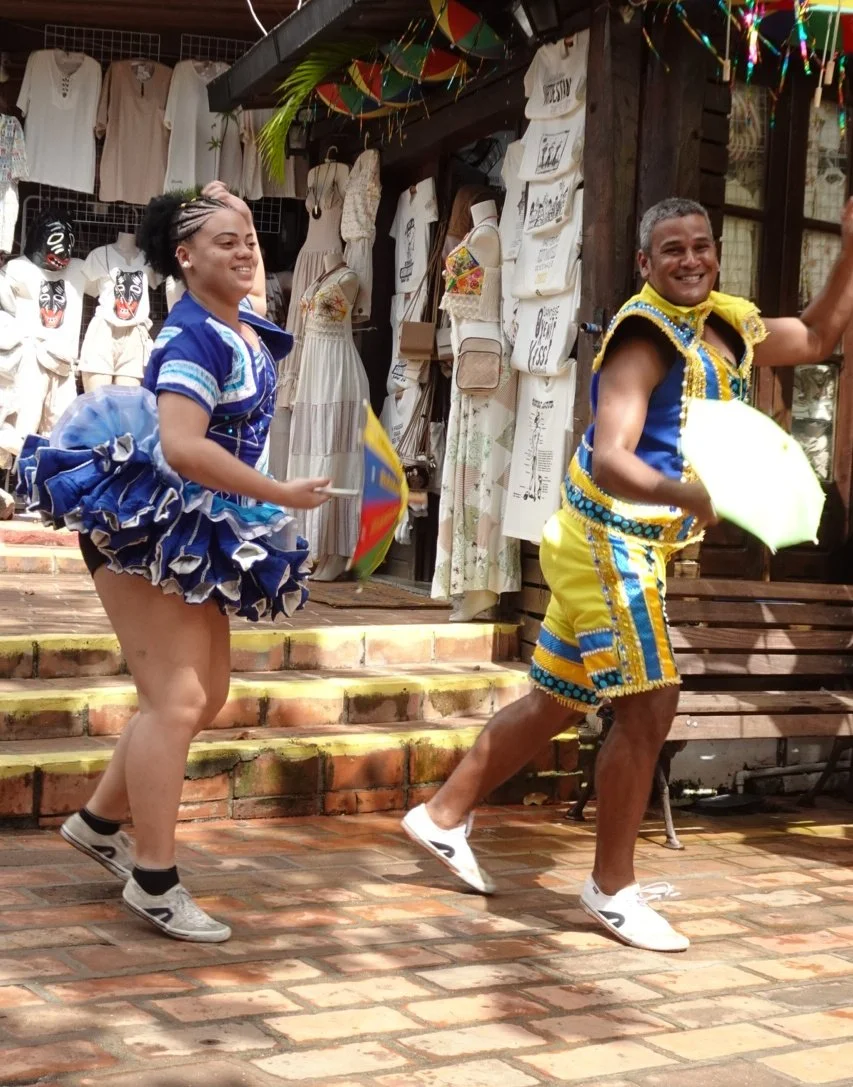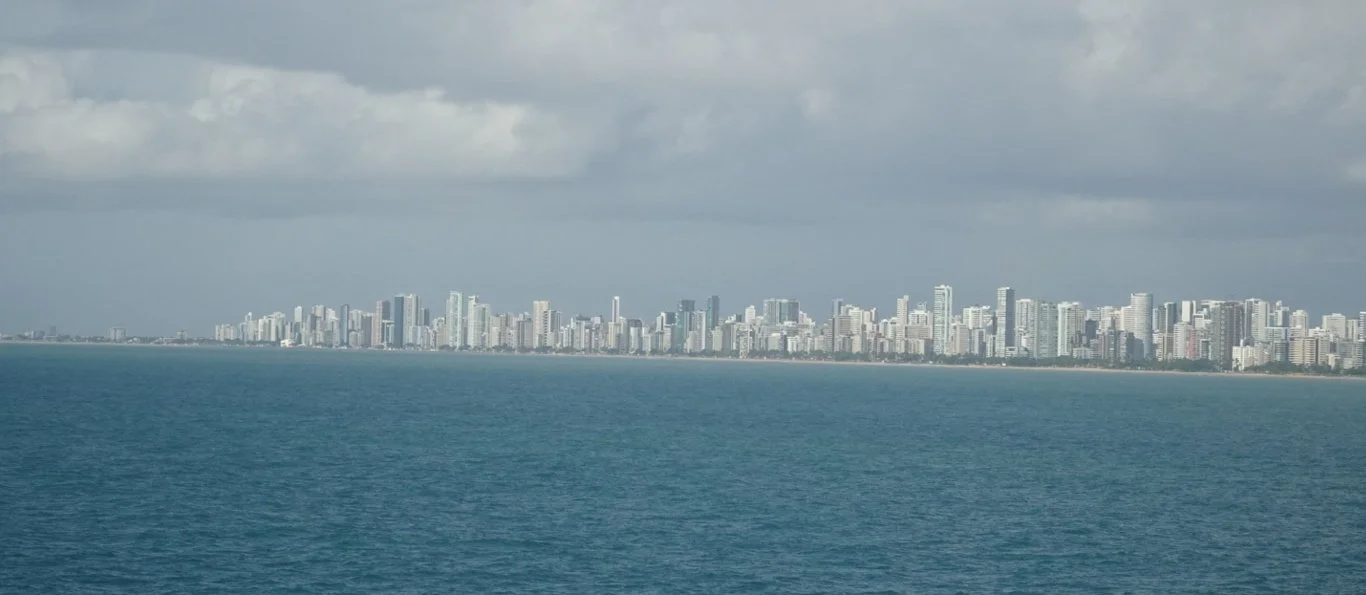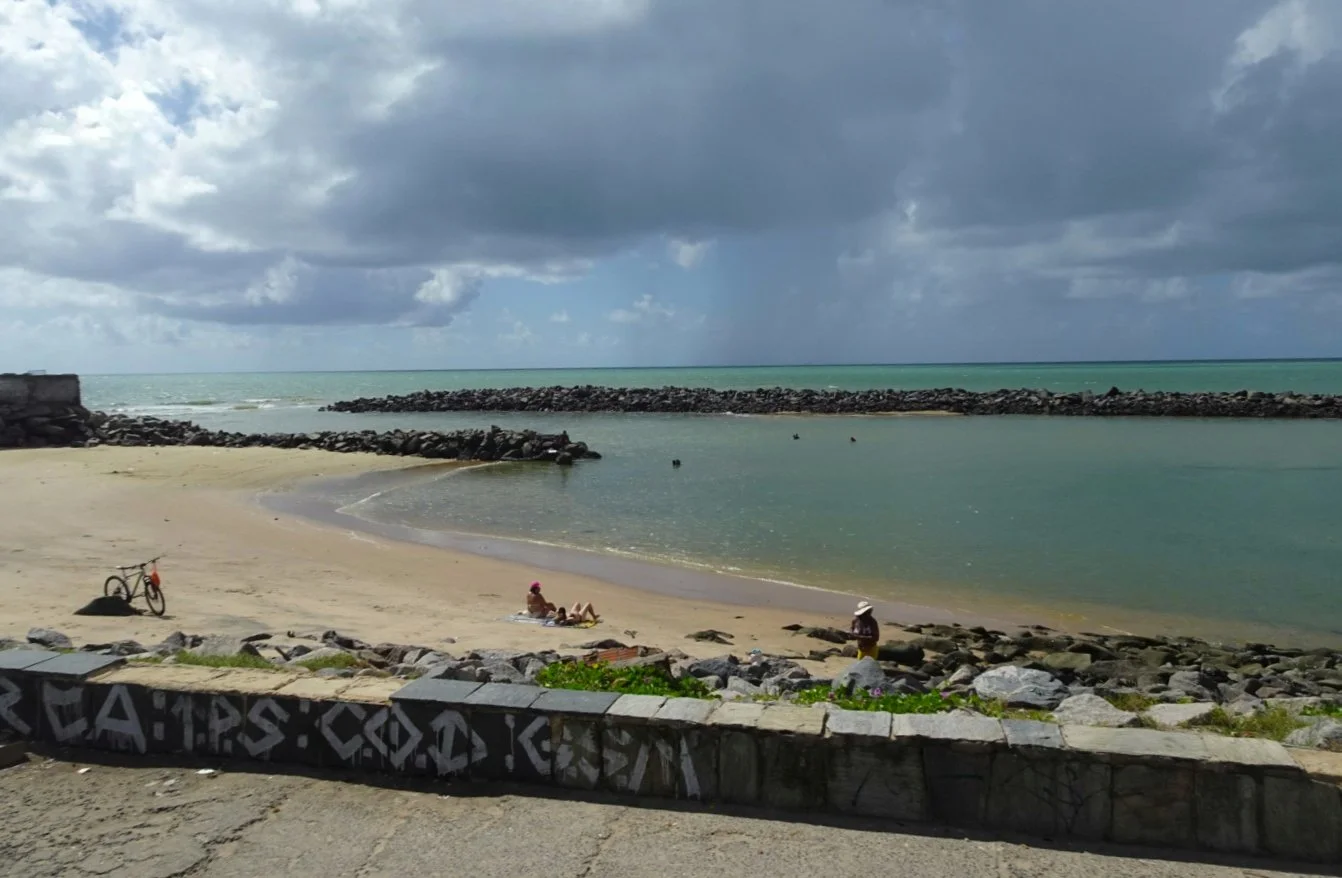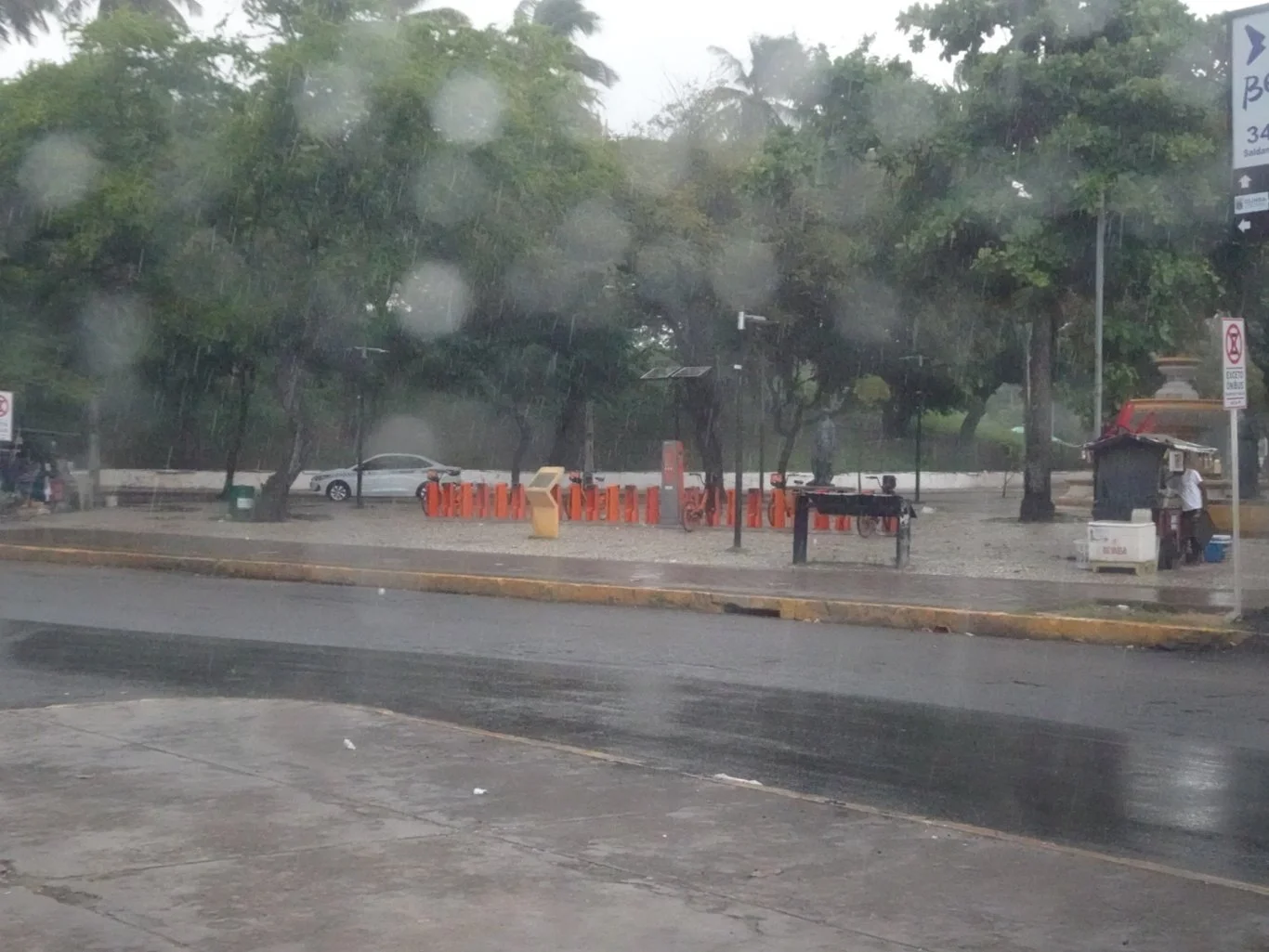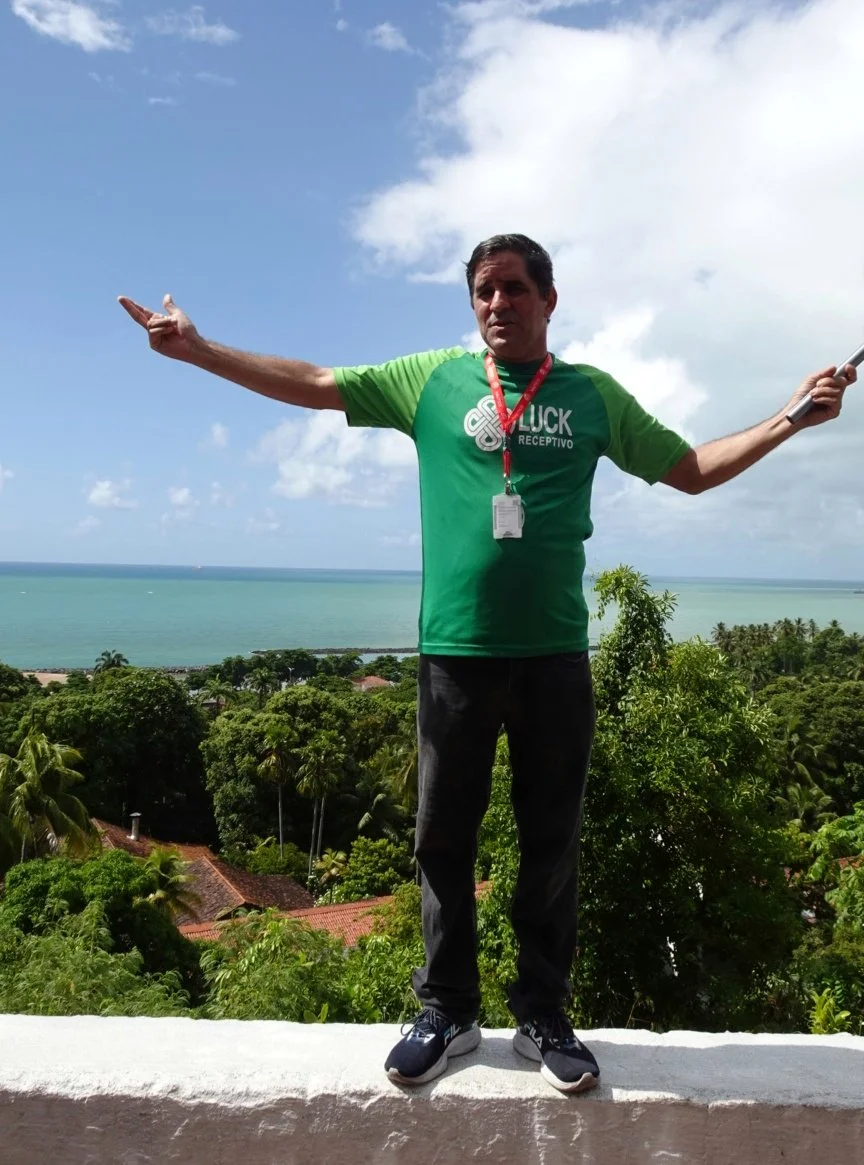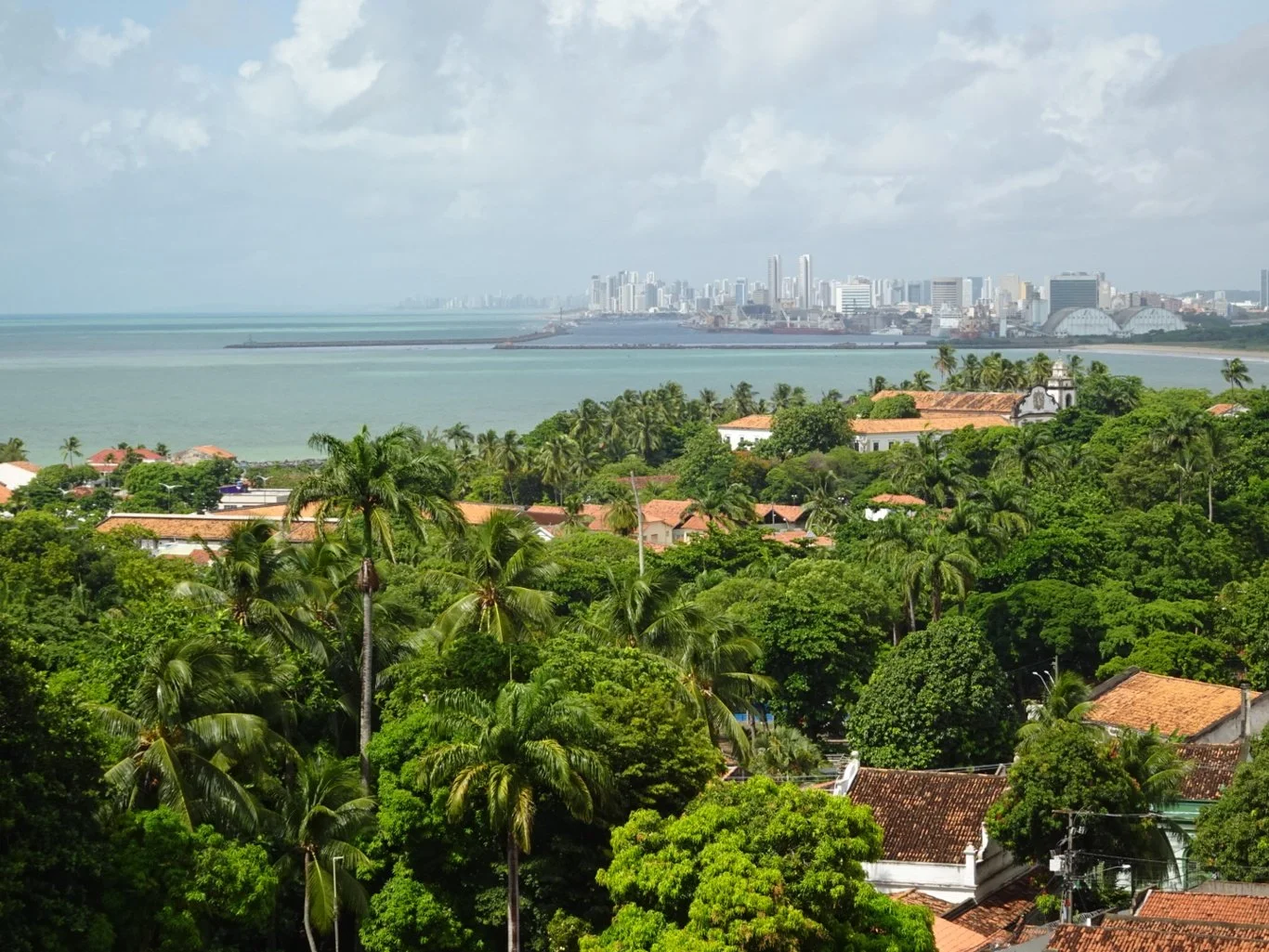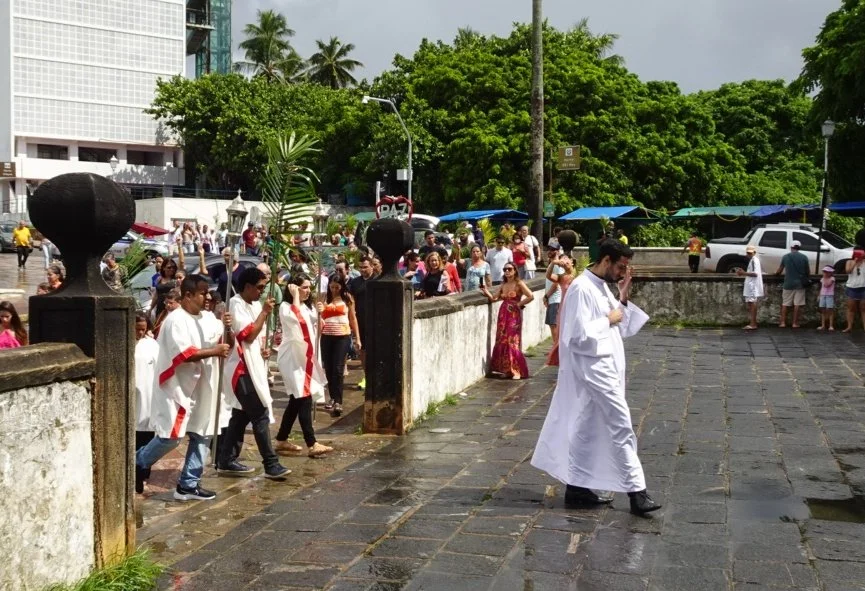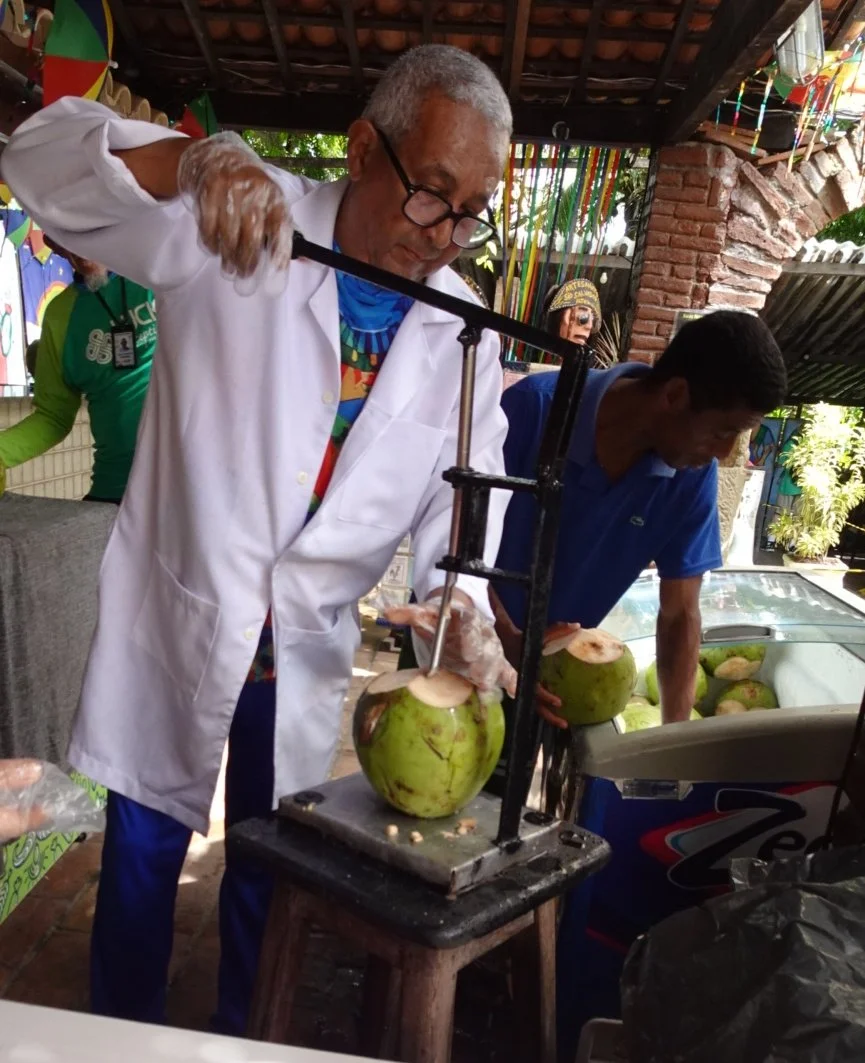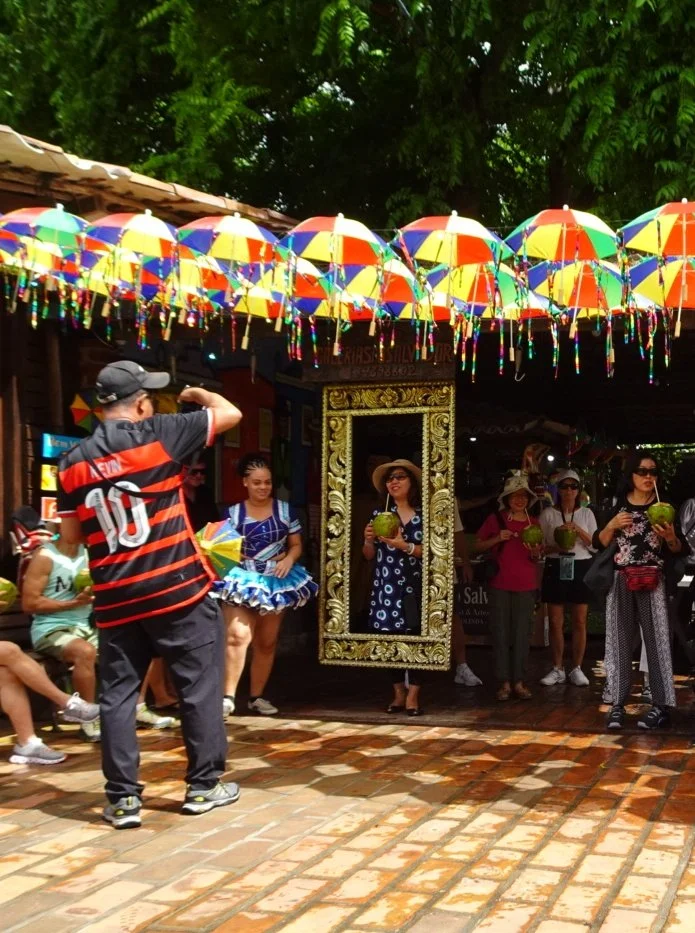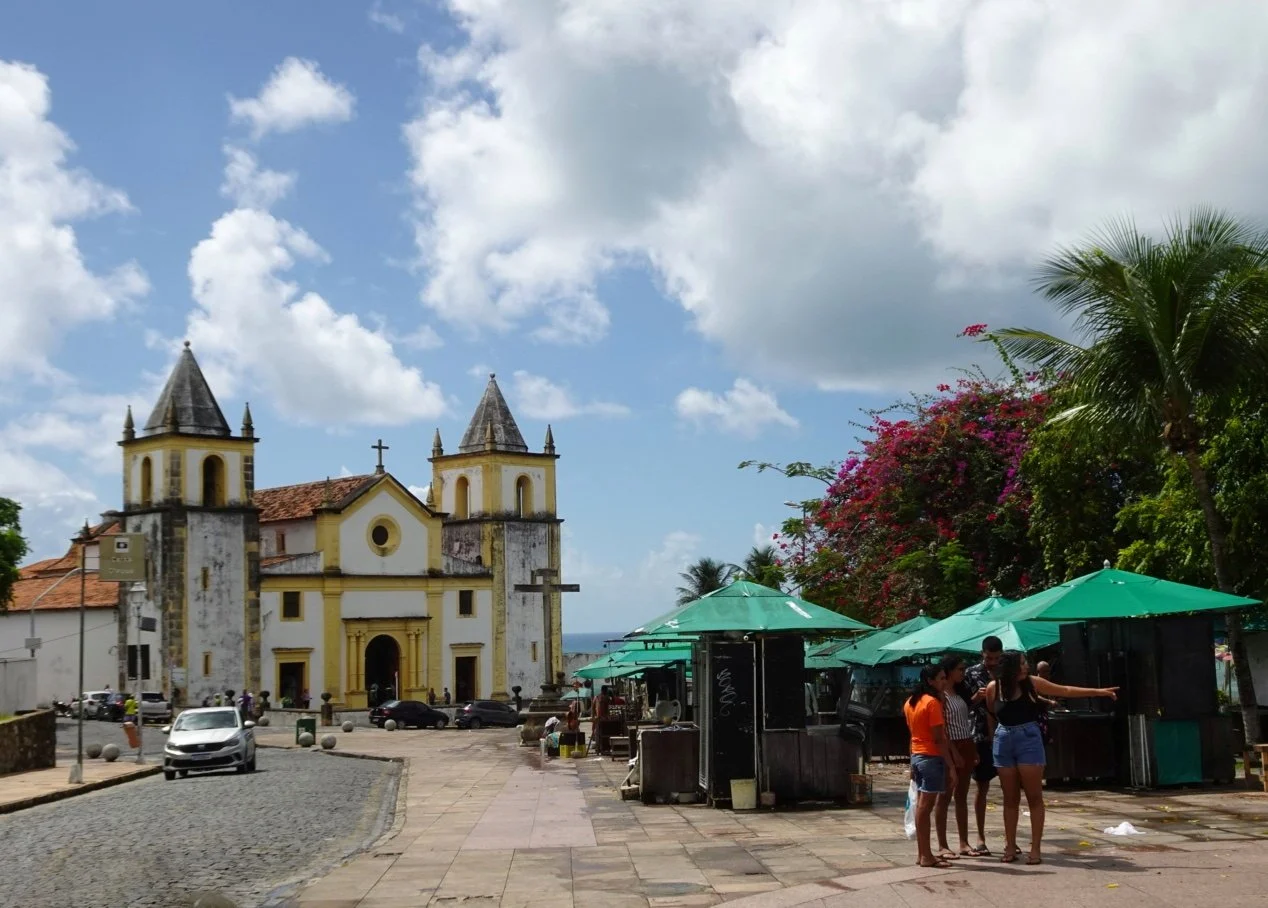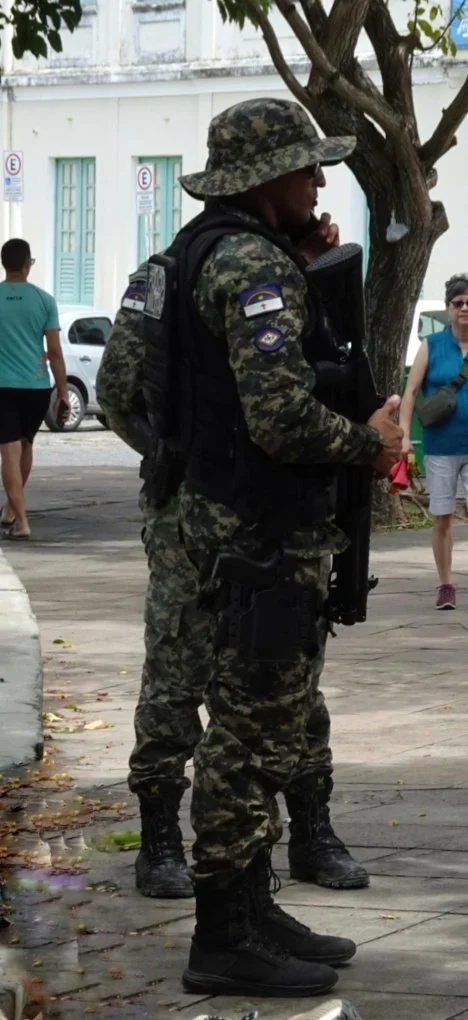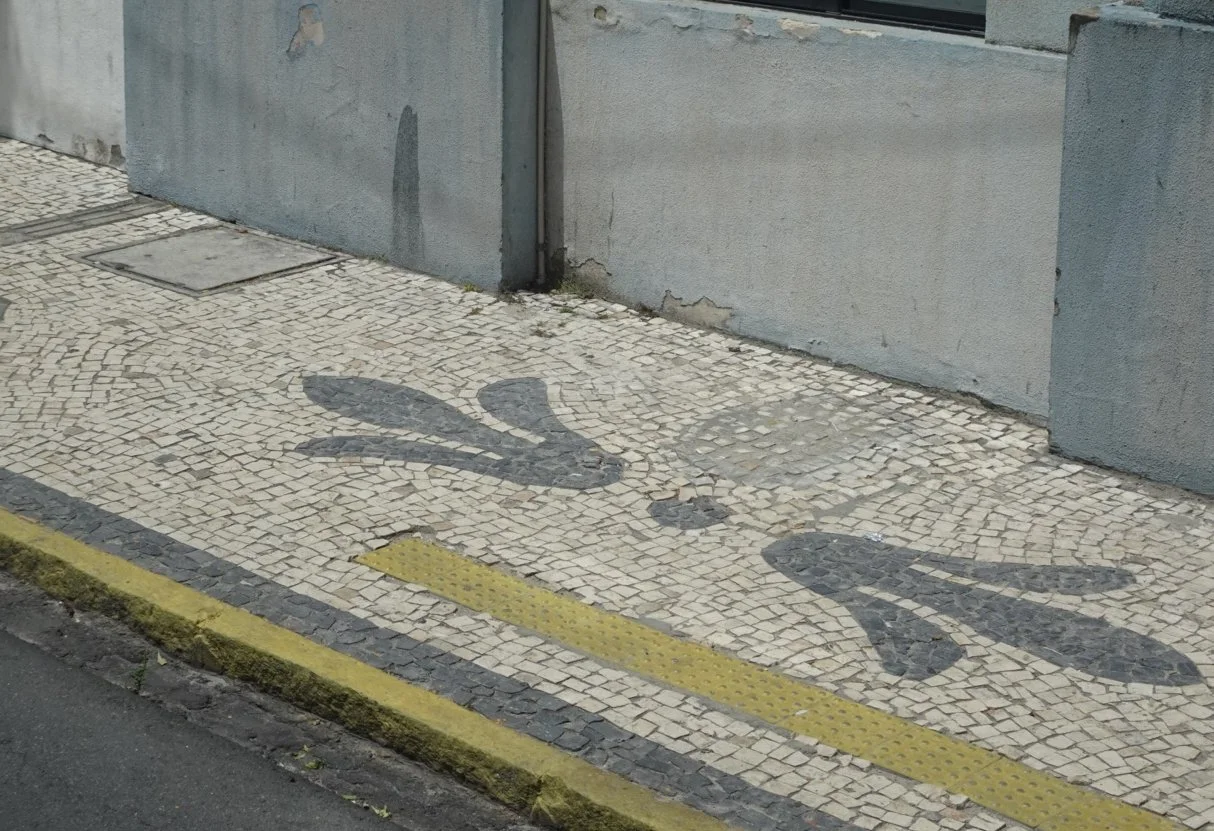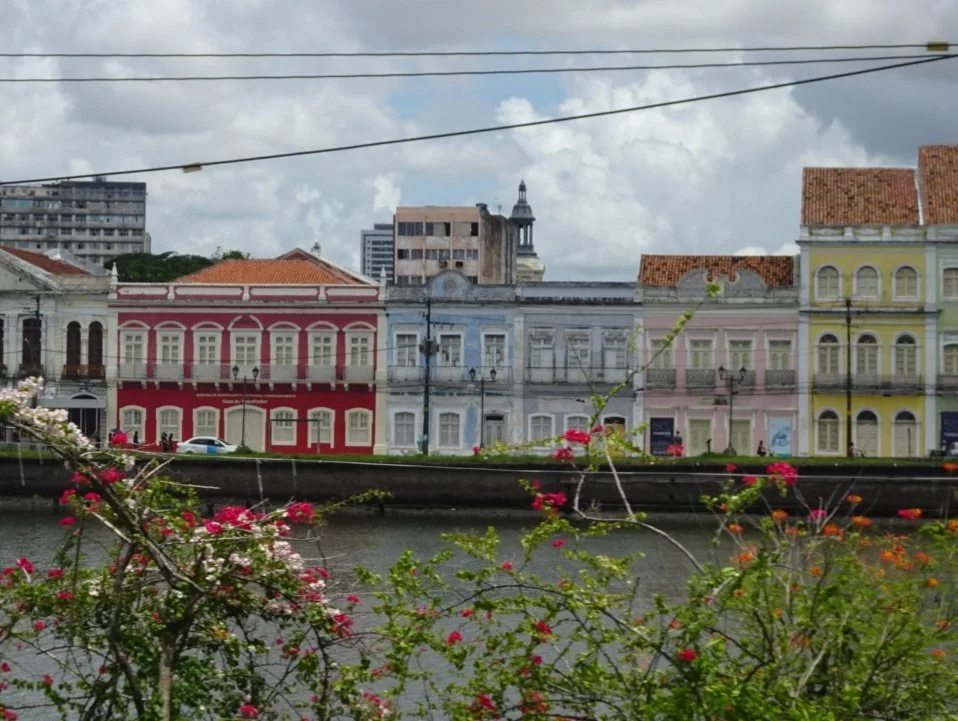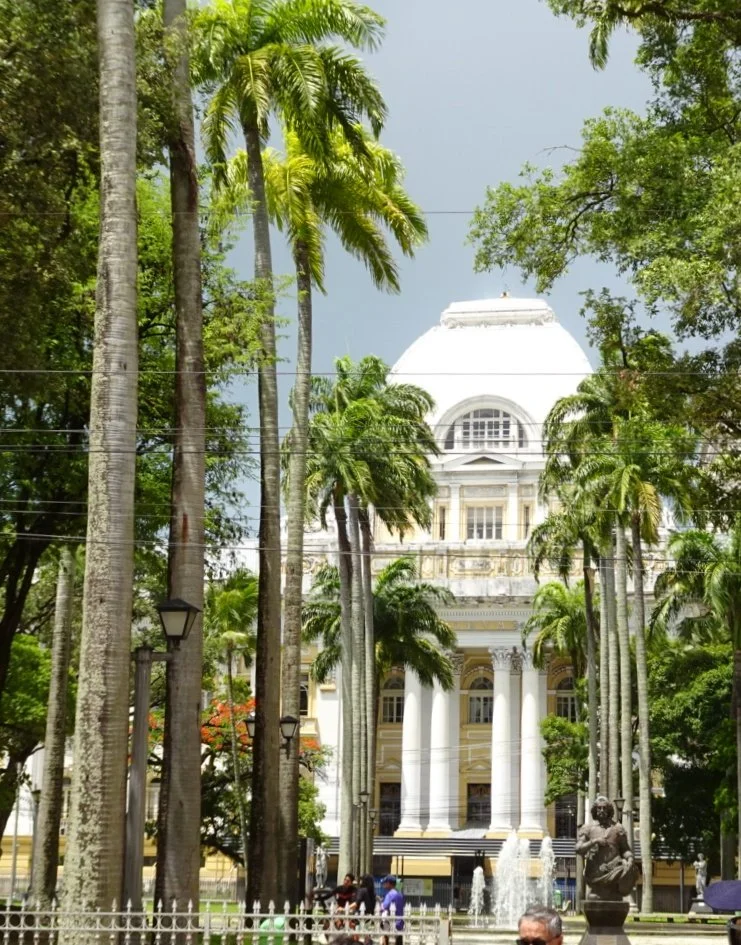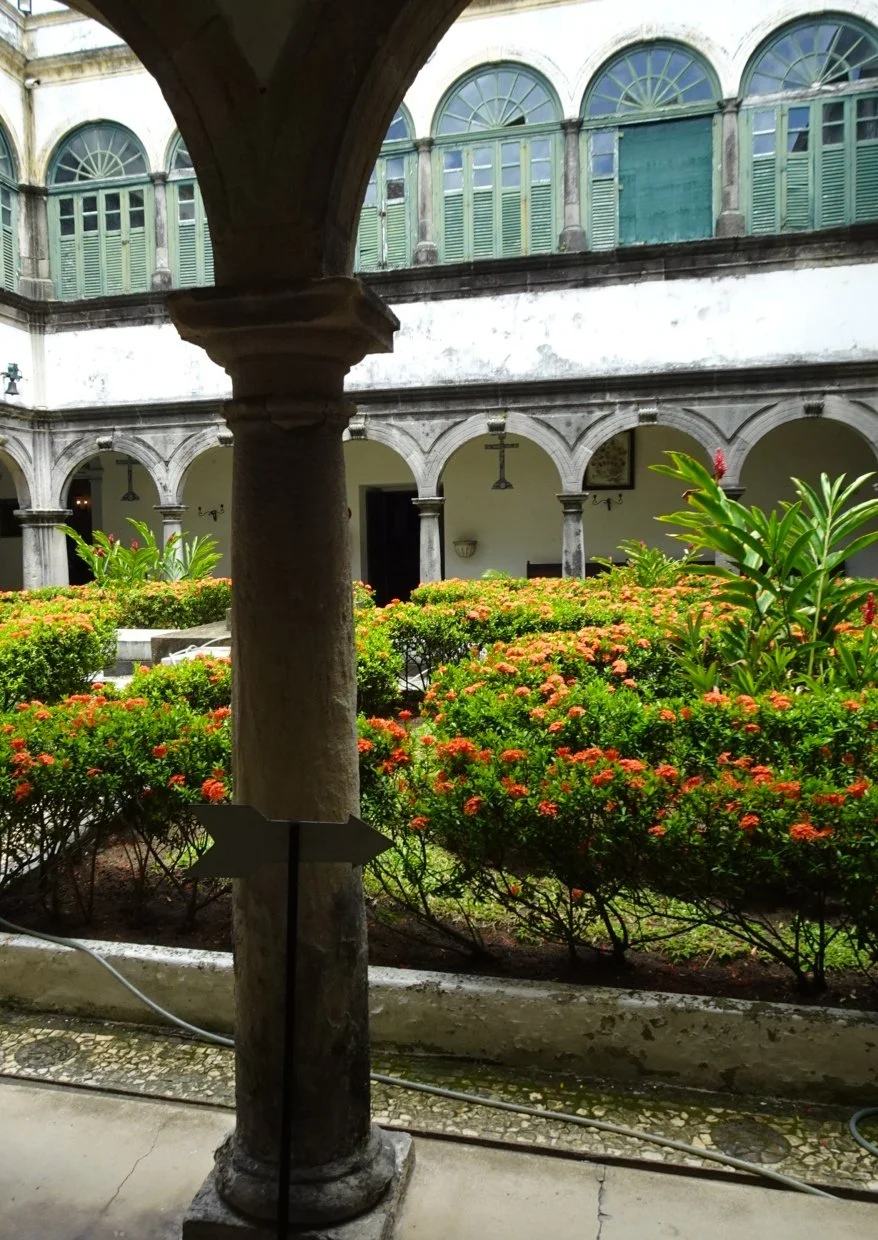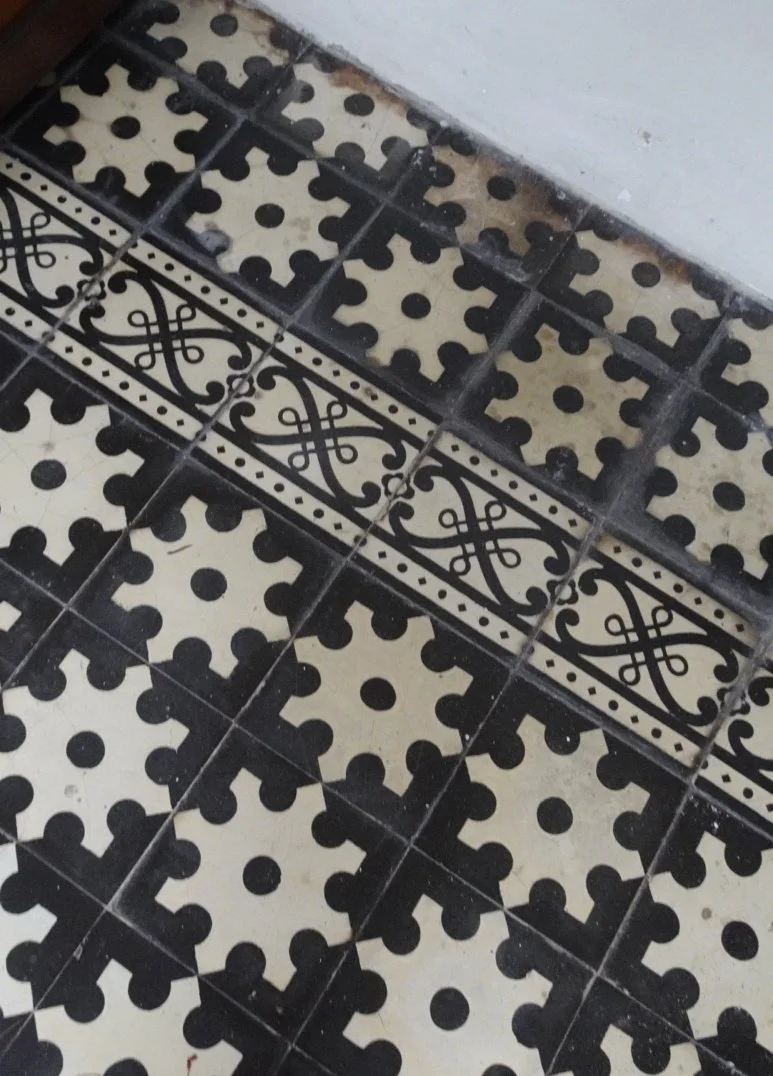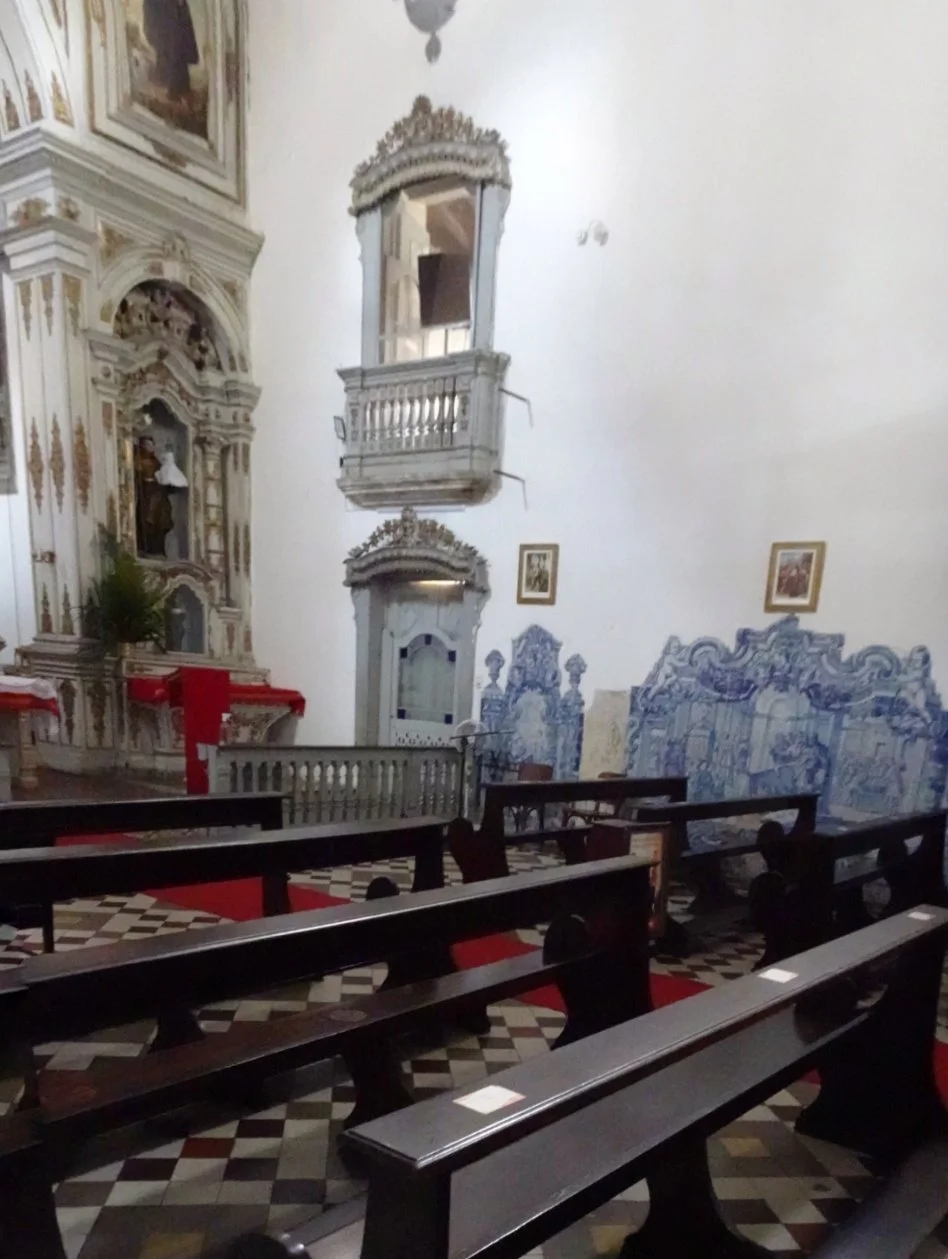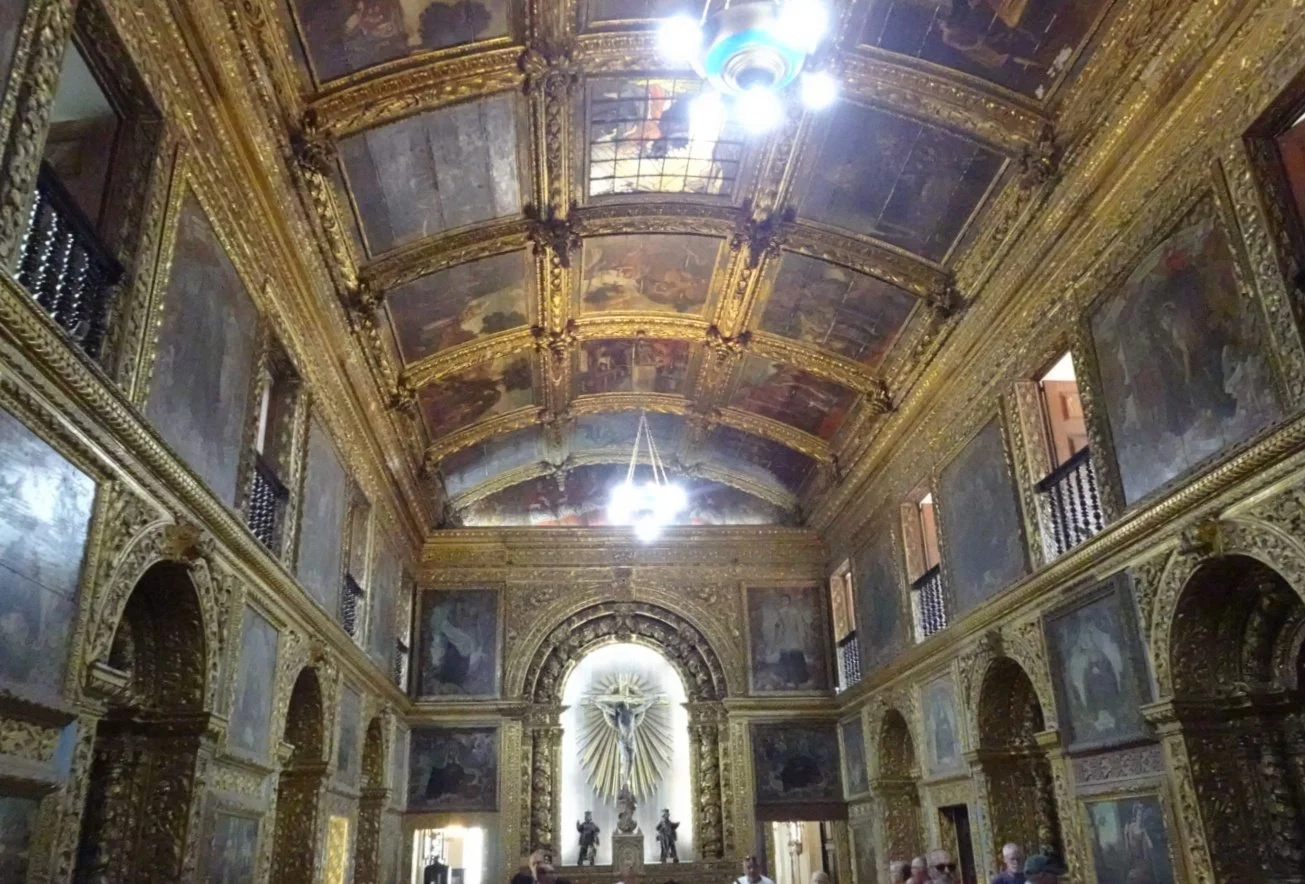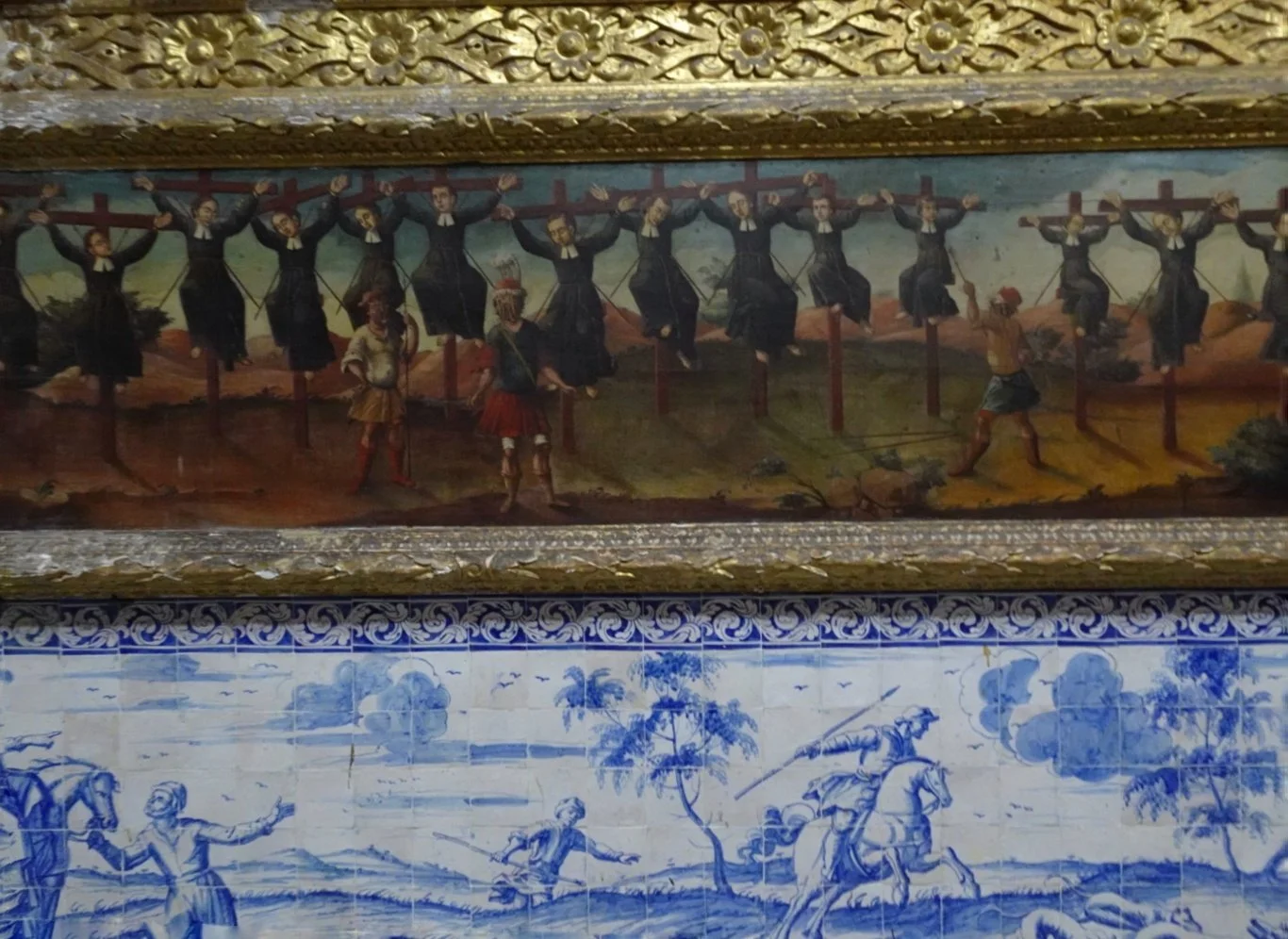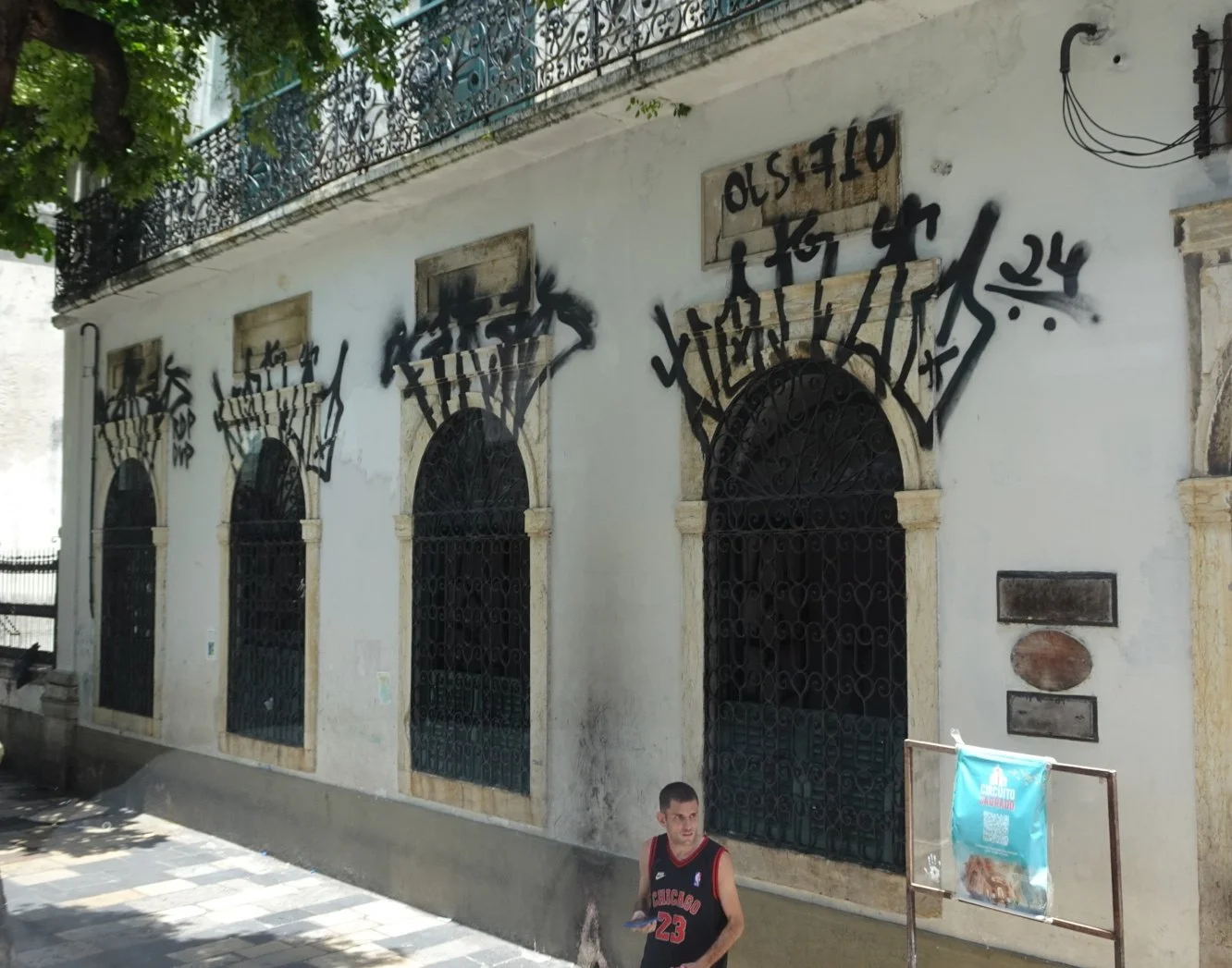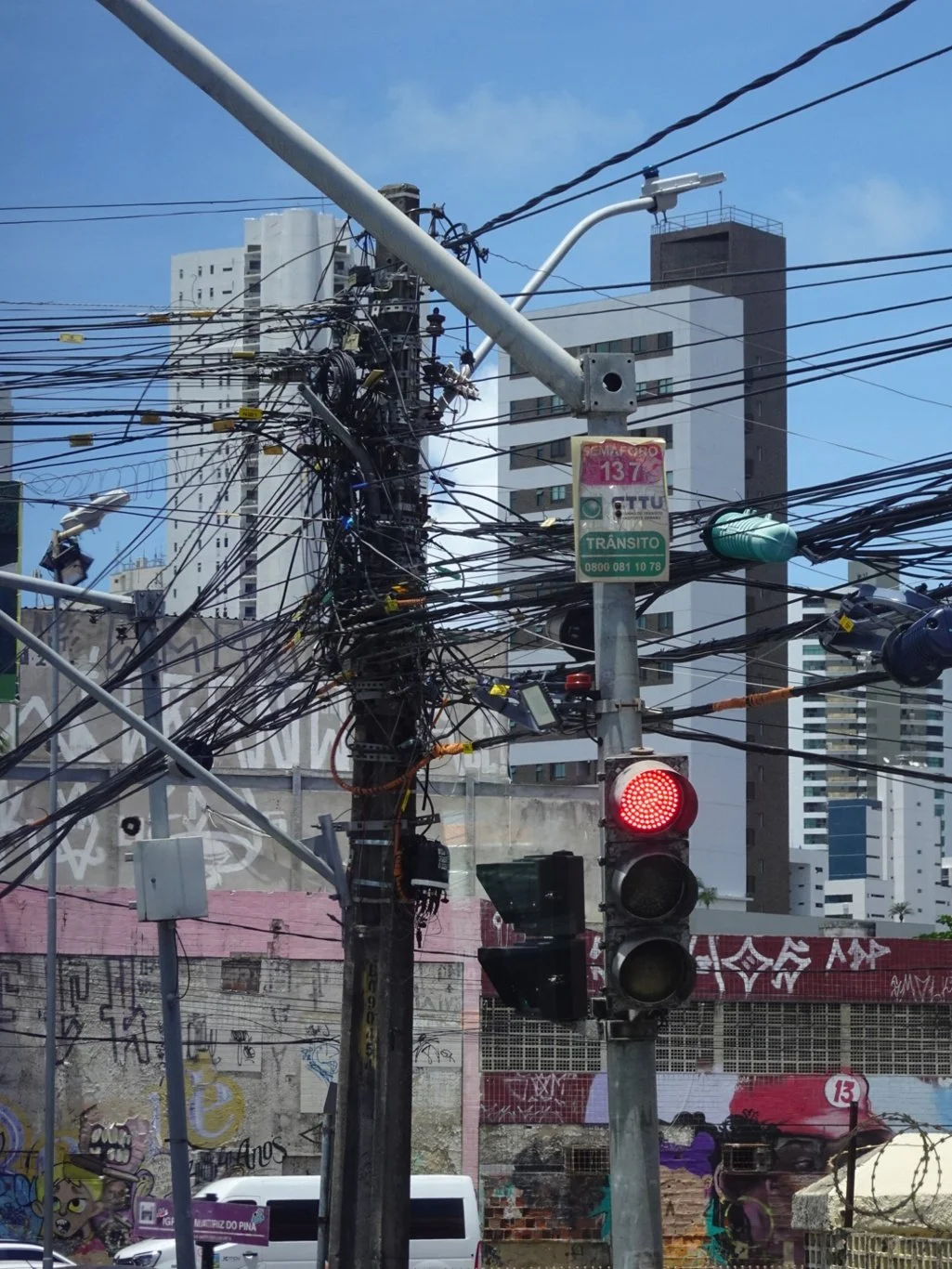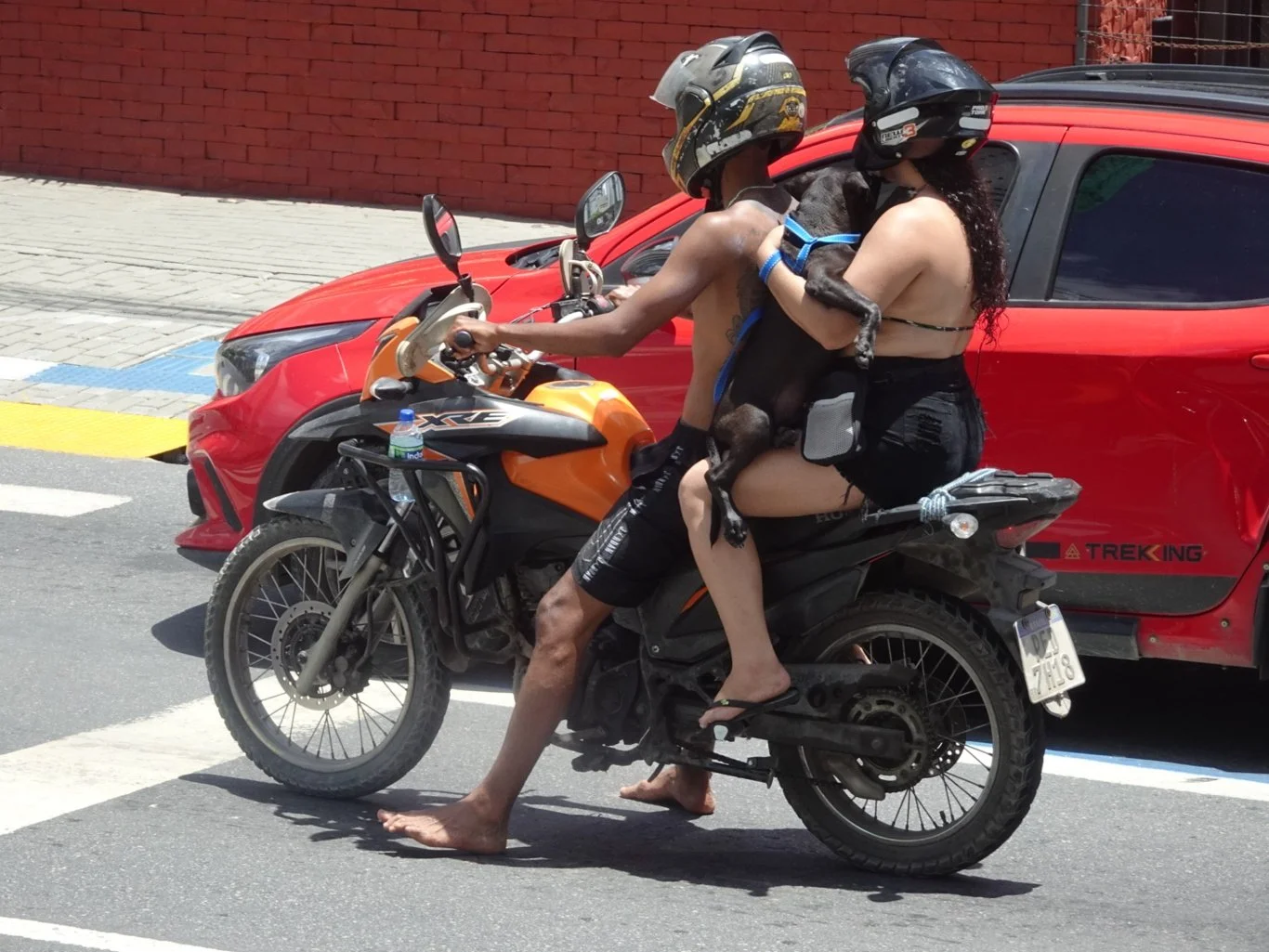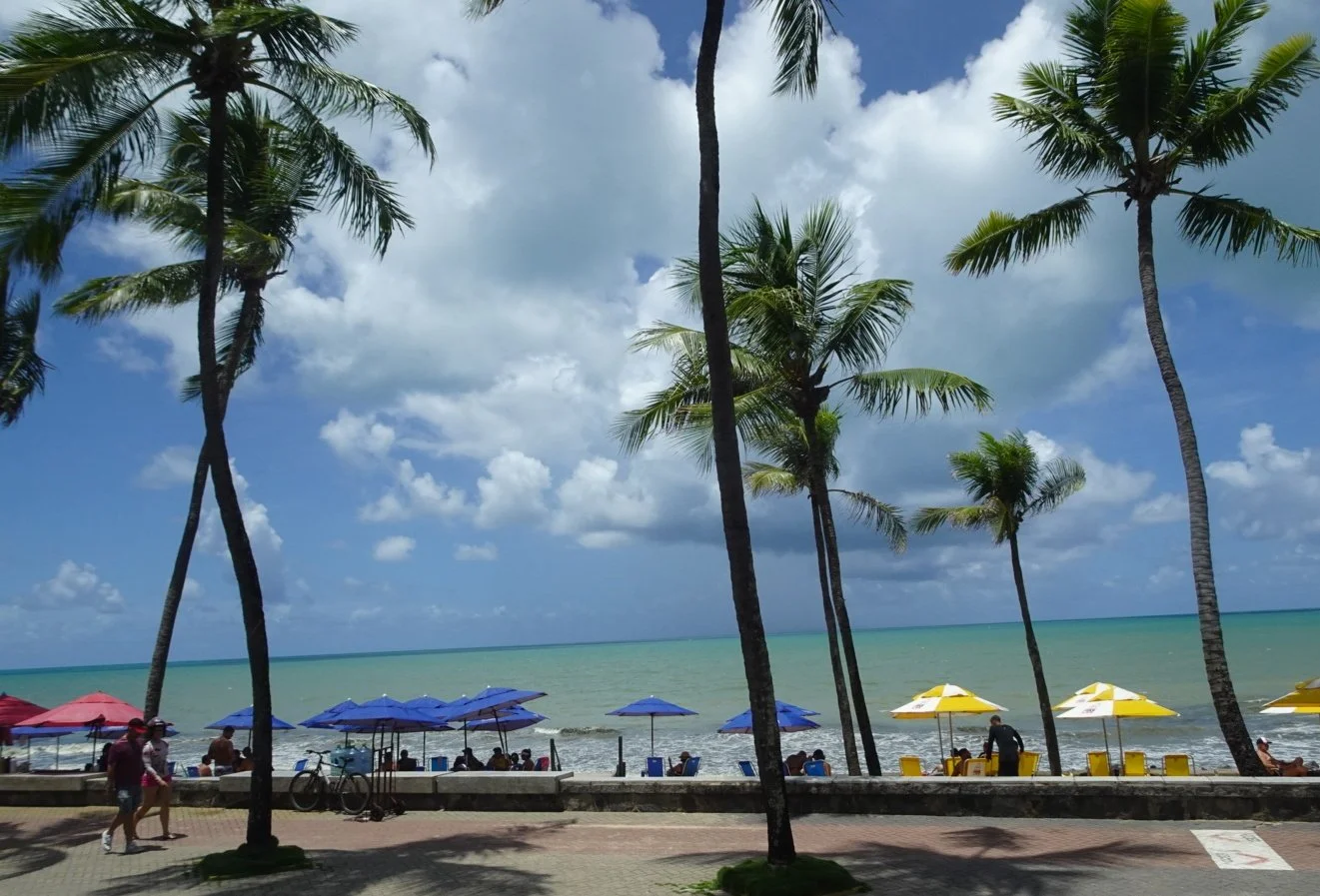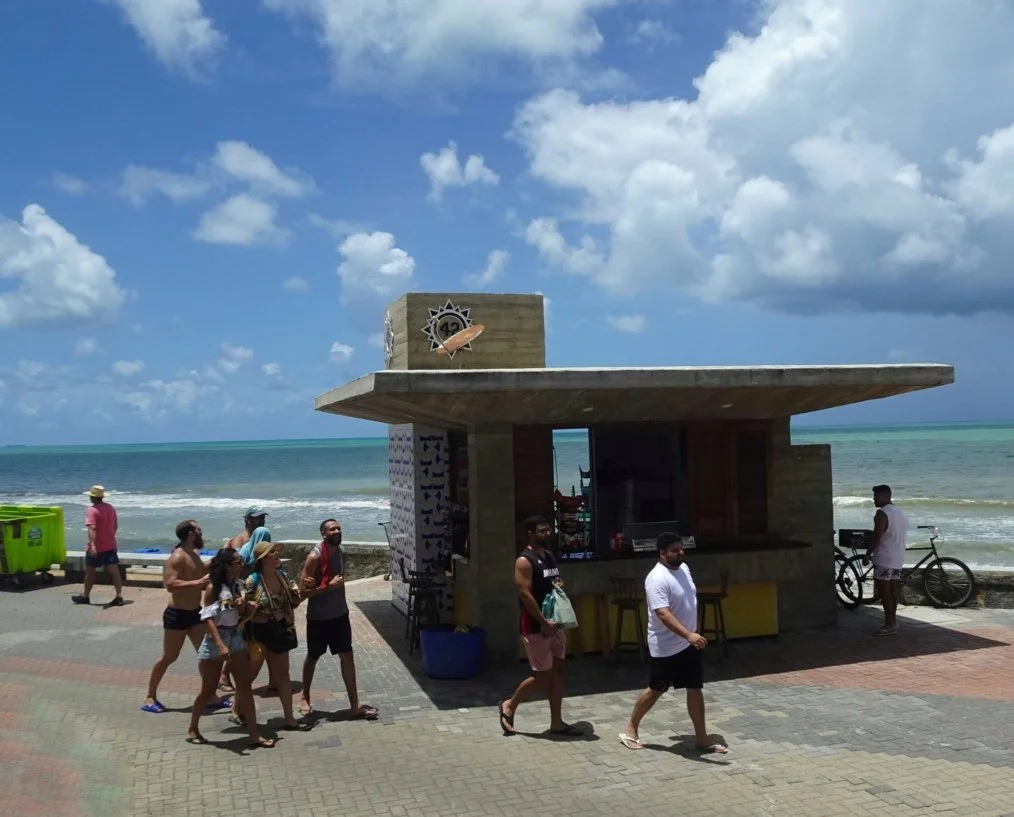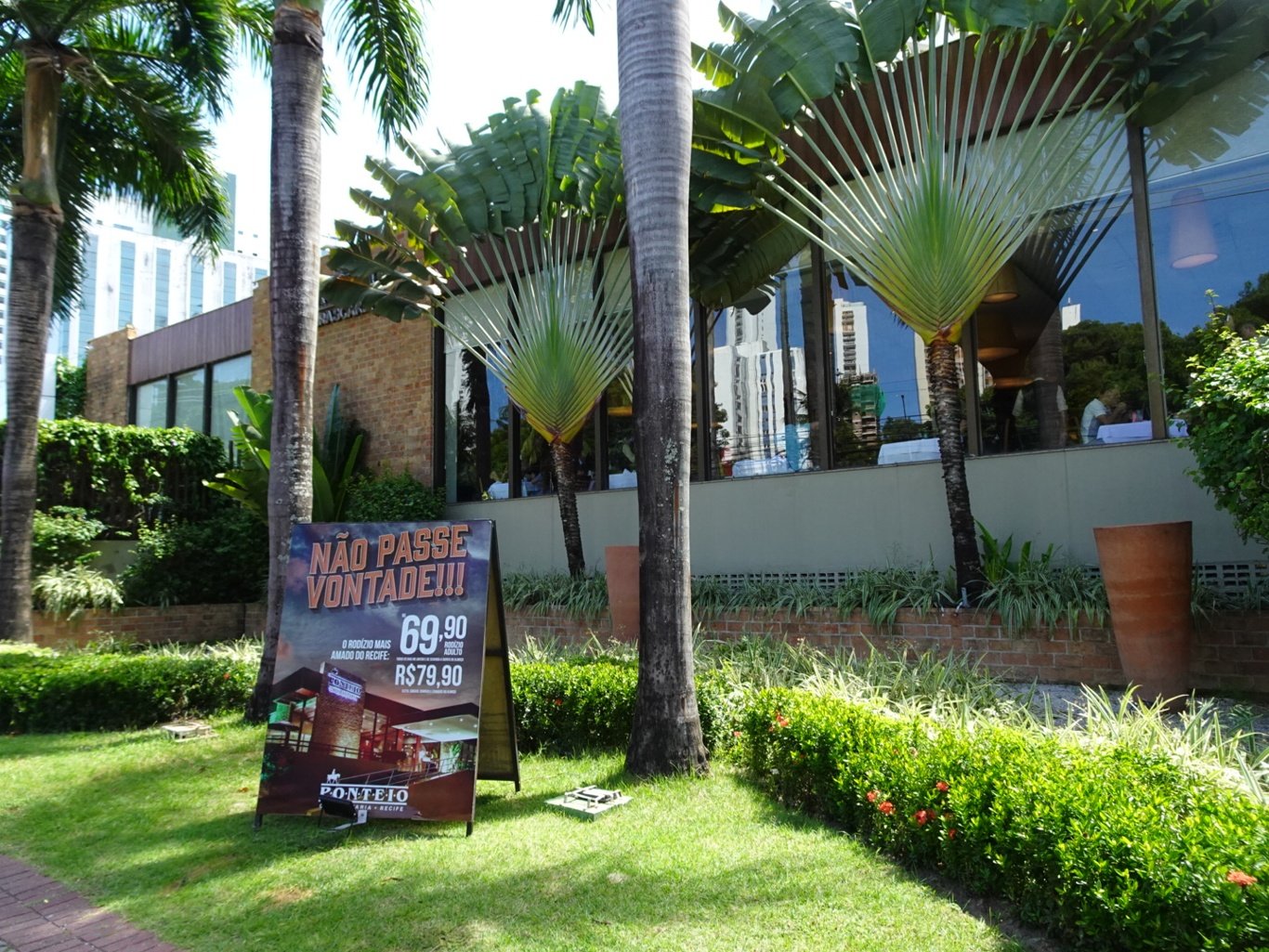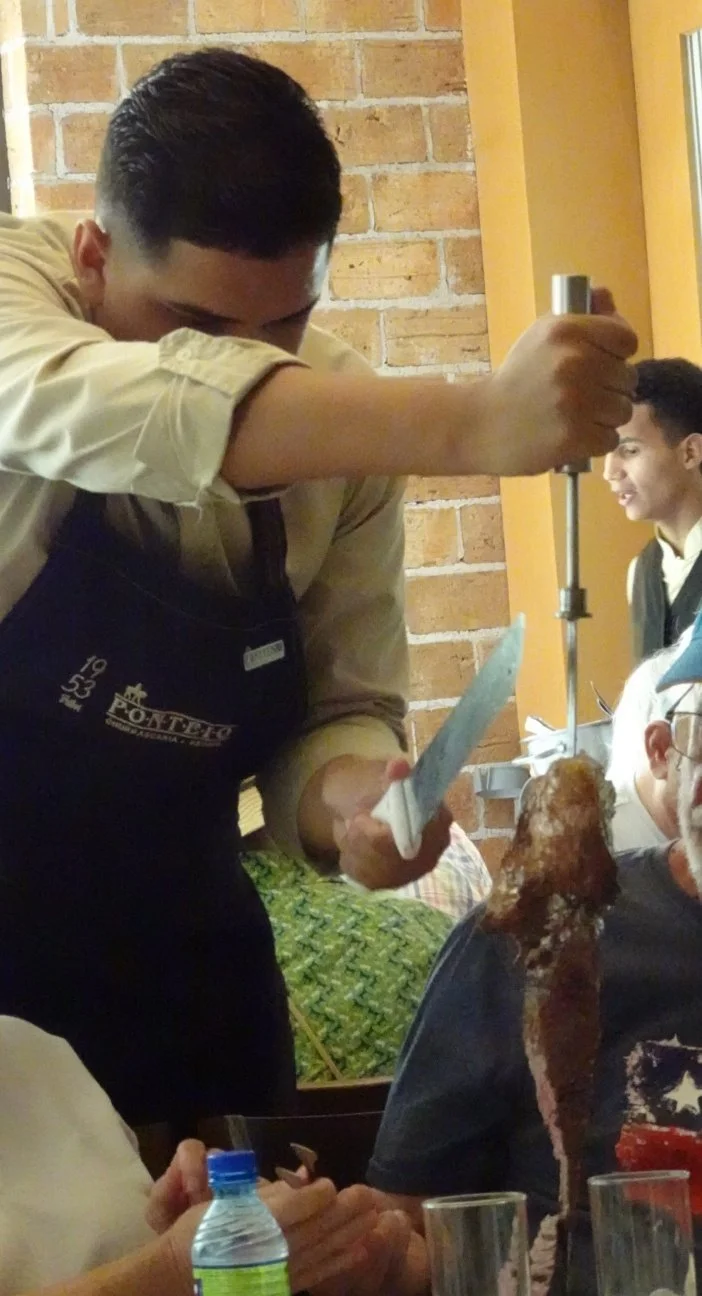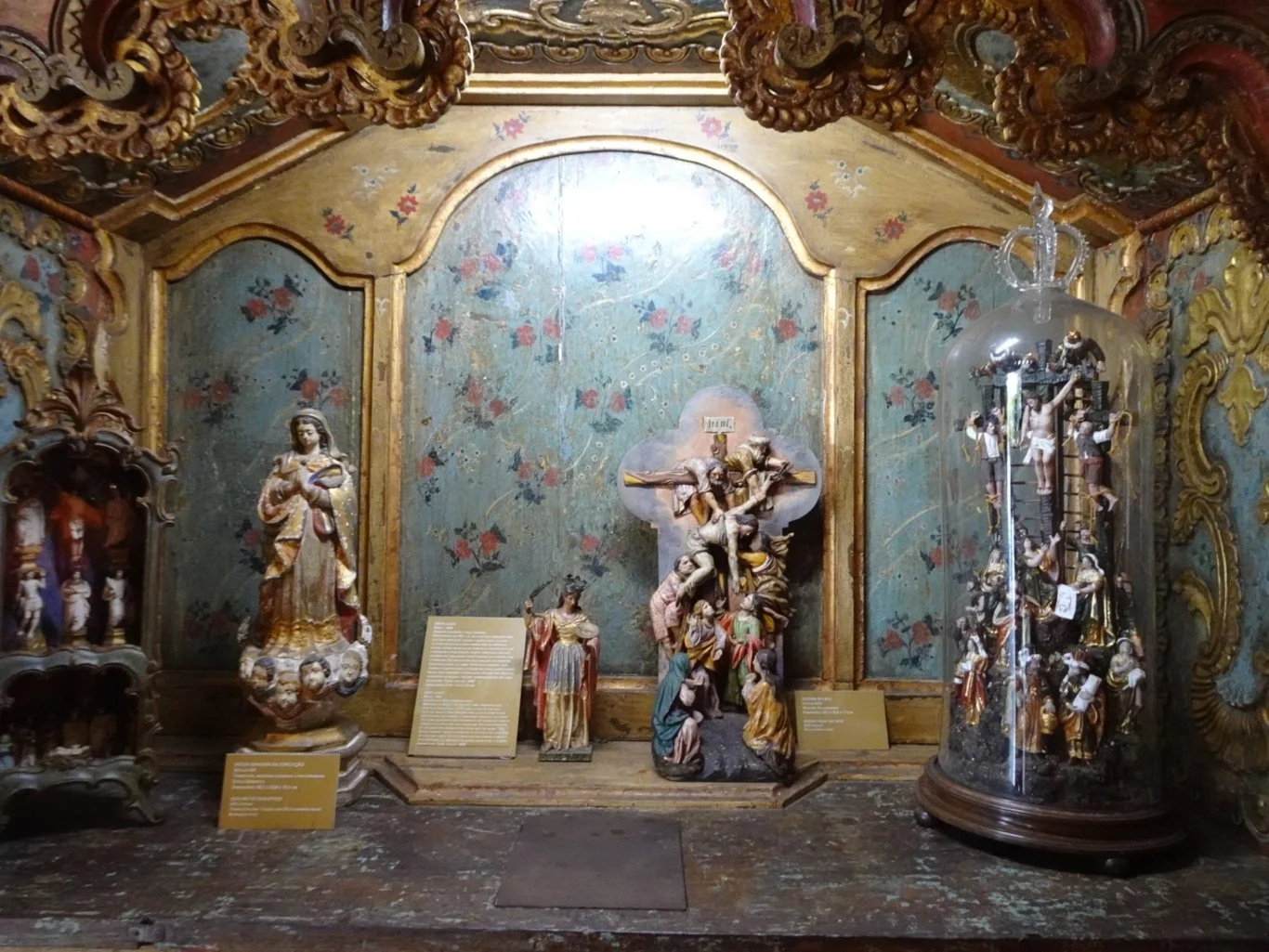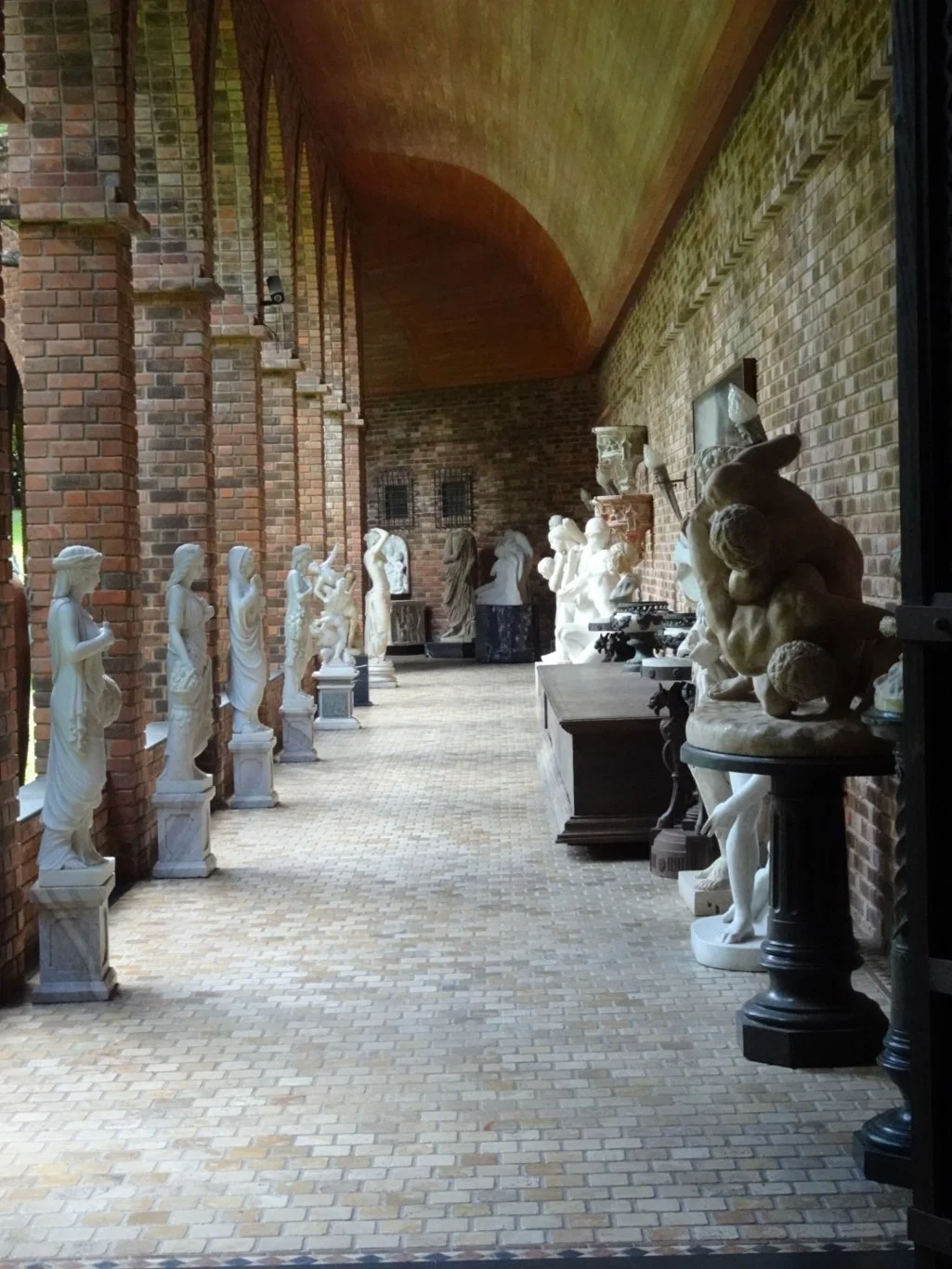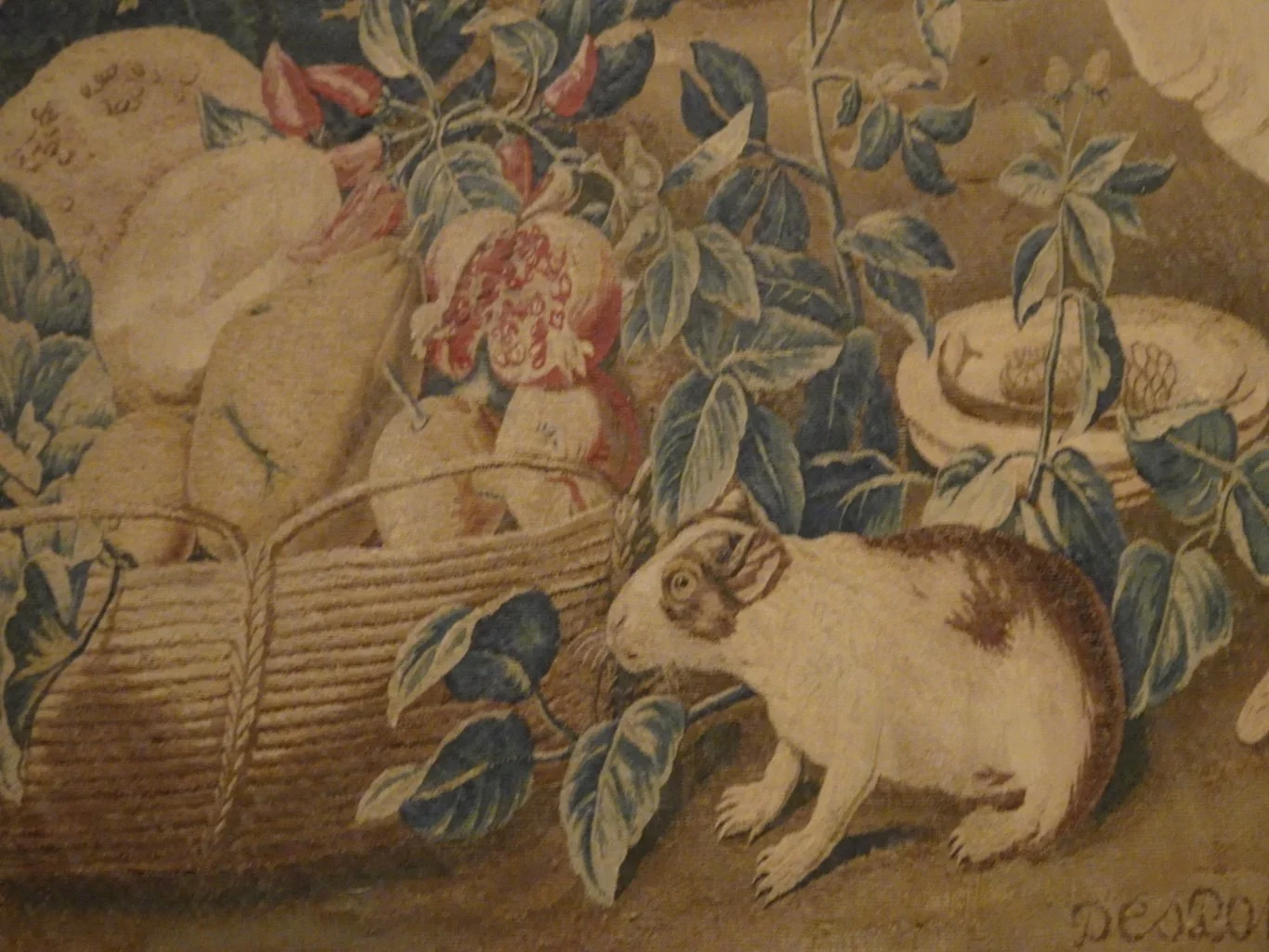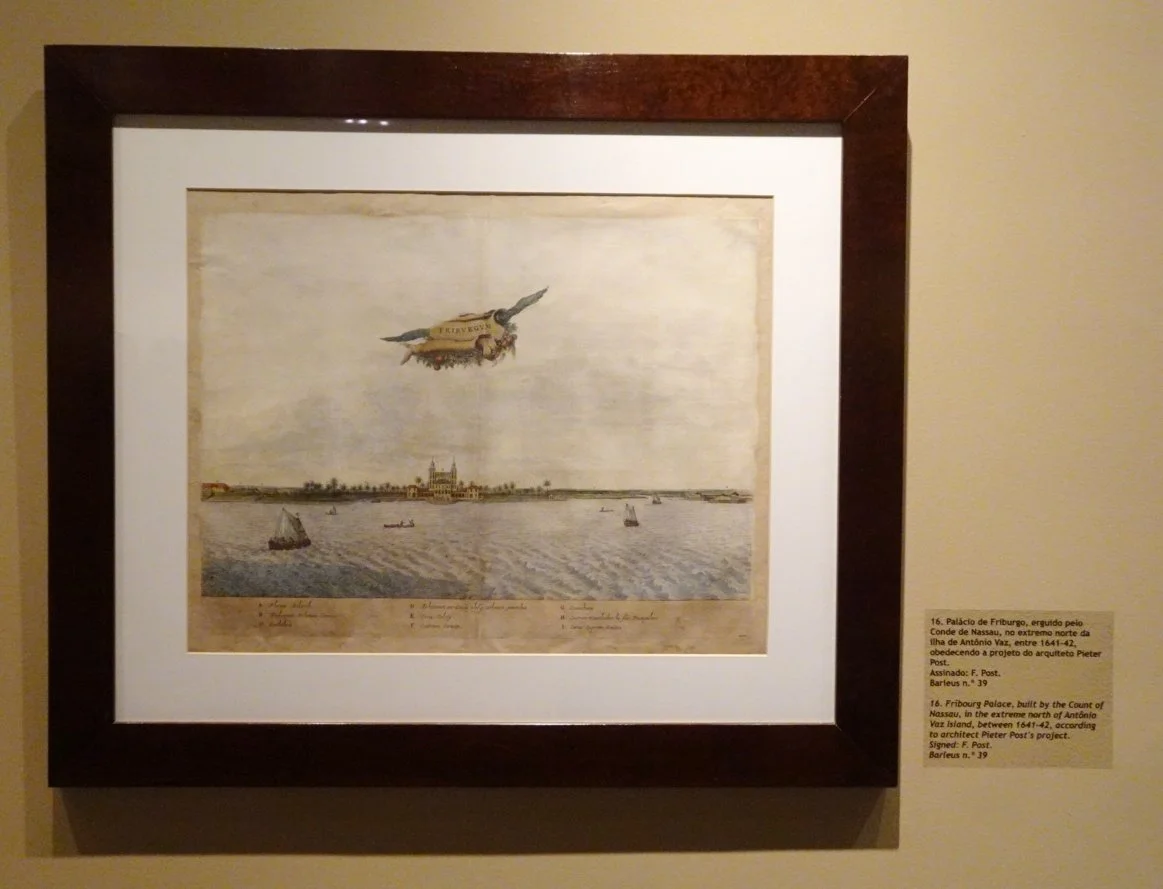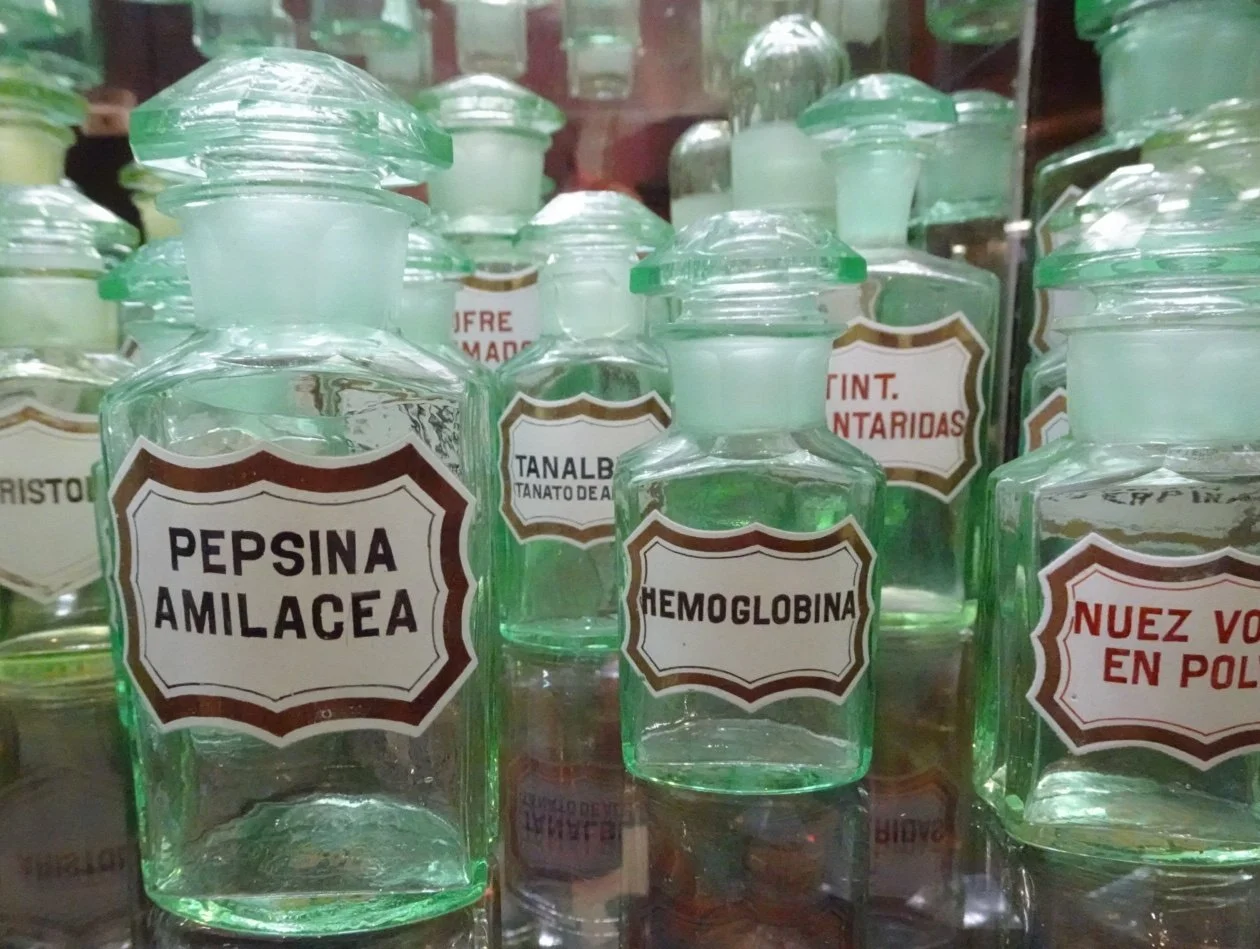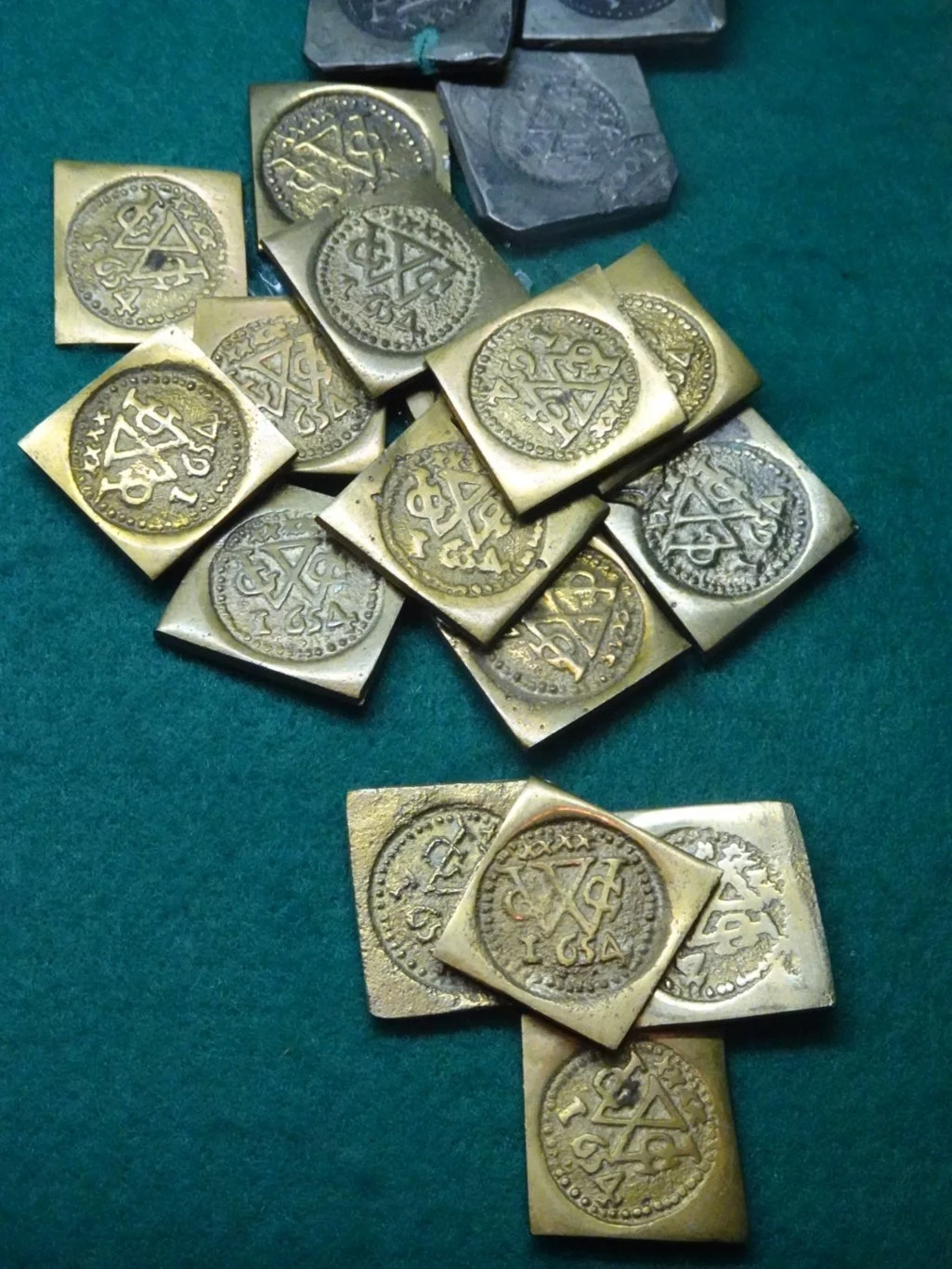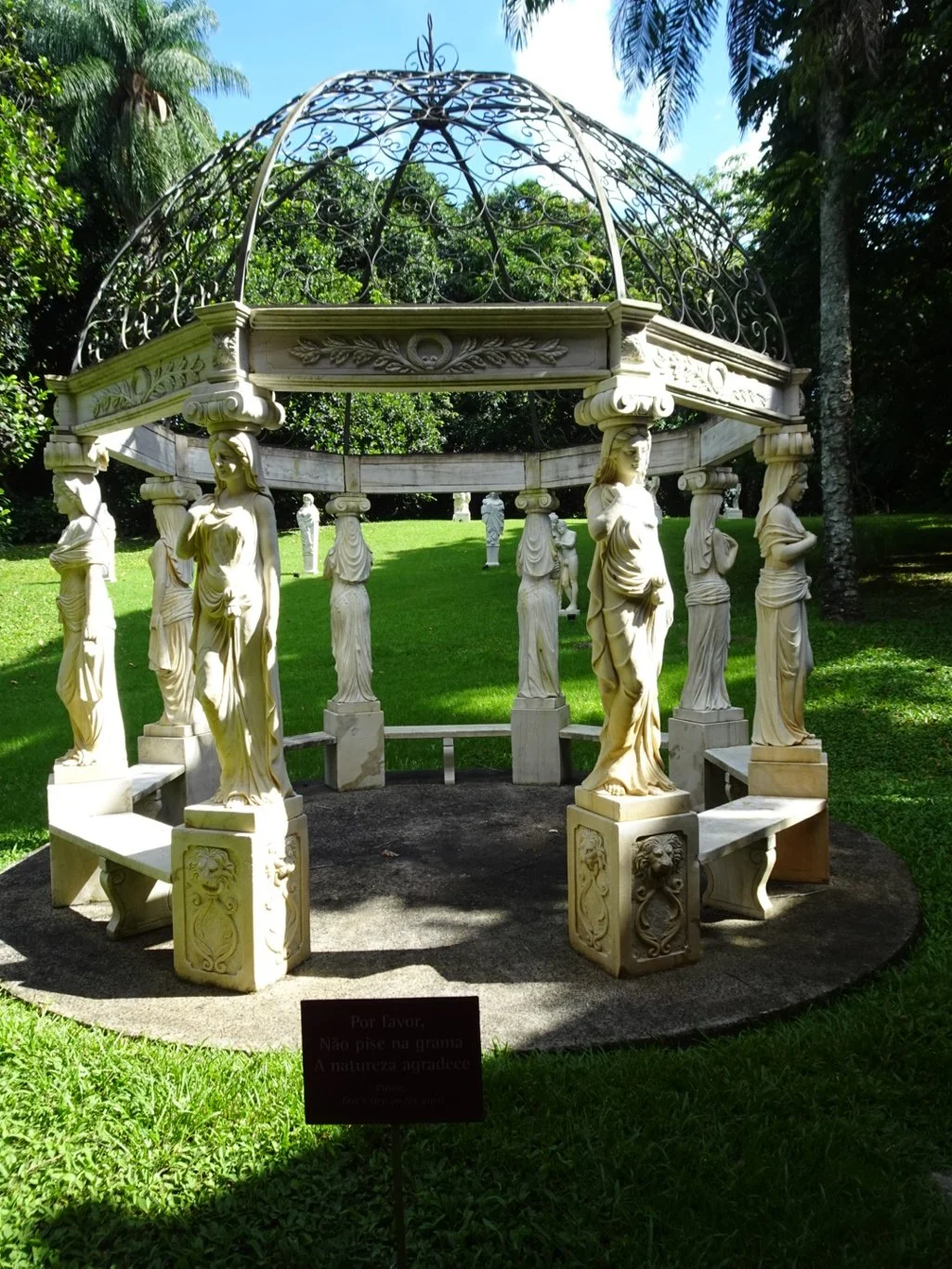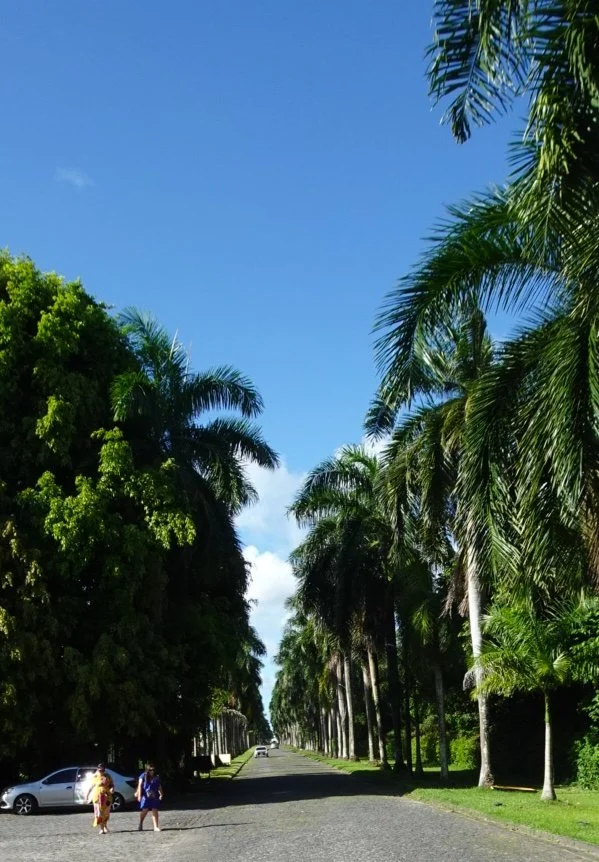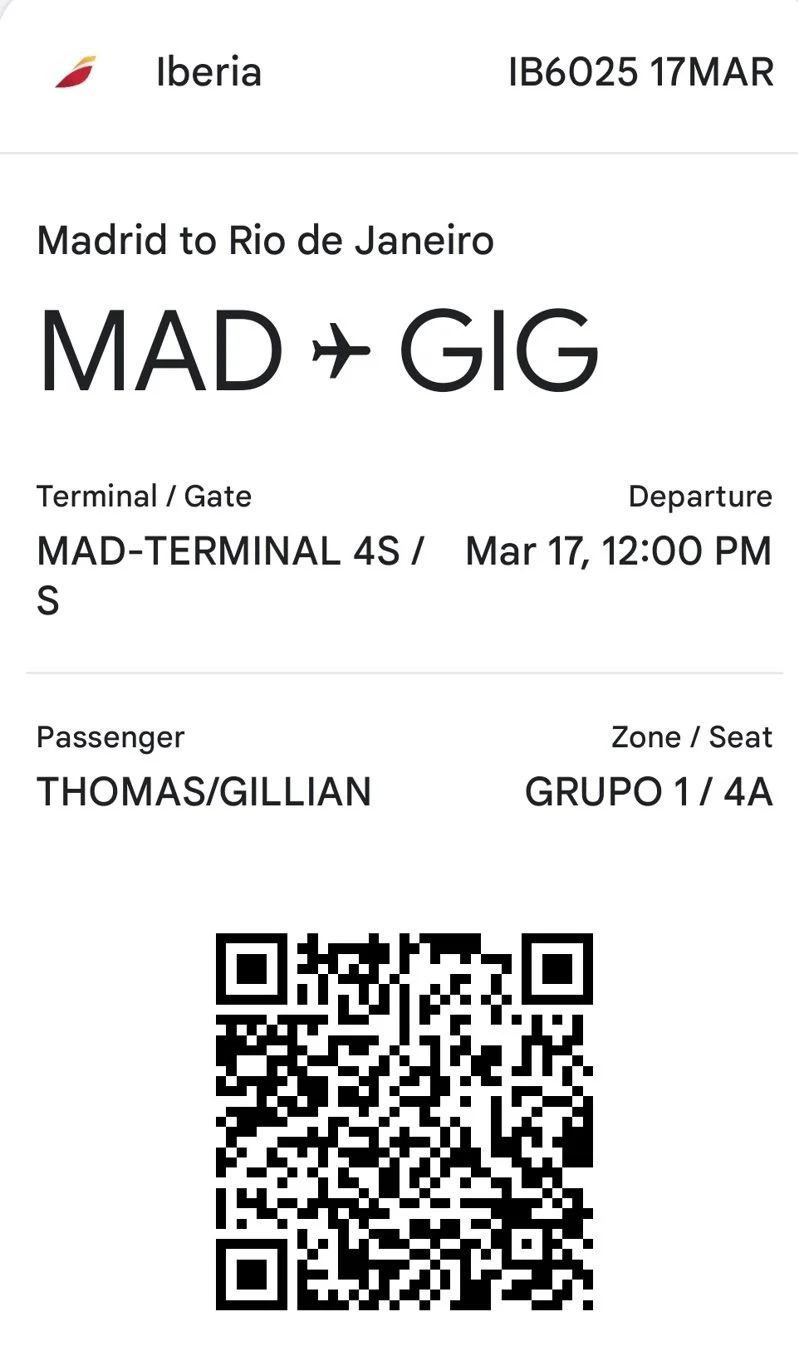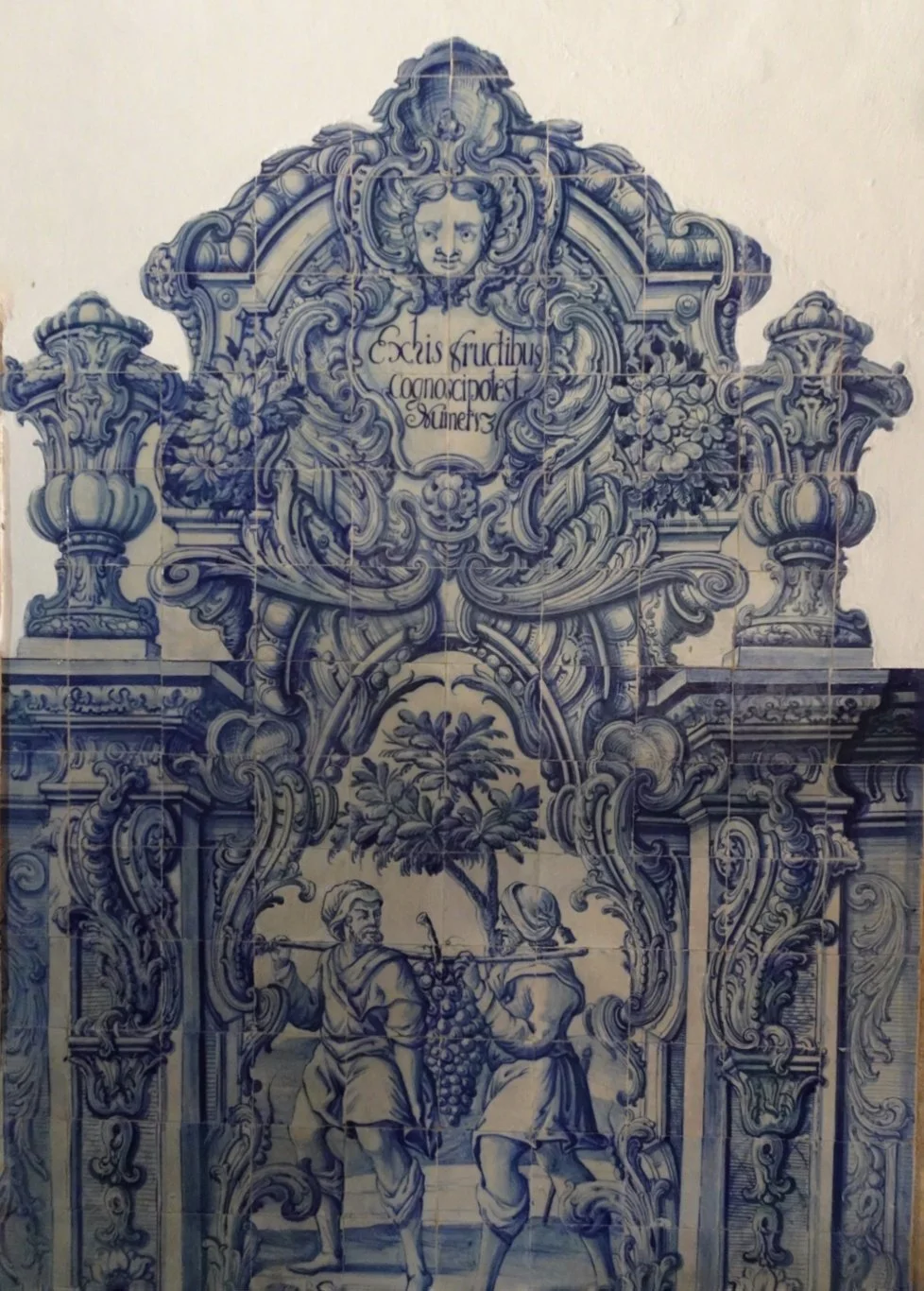A day in Recife
It was already 28C when we arrived in Recife this morning at 7am. I took my camera outside for a while, to get it acclimatised, taking one or two photographs when it warmed up.
I was amazed at the size of this city, which seemed to stretch as far as my eye could see.
I also noted the increasing cloud cover!
Our tour left at 8am and we were going to be out all day. Were we up for that? Of course we were, even though our day began with a shuttle bus to the port gates, a transfer to a tour coach and then a little further on, a transfer into smaller vehicles. Our first stop, the World Heritage site of Olinda, doesn't allow large coaches so we left the coach behind and headed up there in a minibus.
By the time we arrived, the heavens had opened and it was pouring with rain. In the way of these tropical storms, however, it was unlikely to last long.
Our guide shrugged his shoulders and said “Well, what shall we do now?”
Let me introduce Leo, our first class guide whose energy was legendary! He had lived in San Diego as a boy, had perfect English and plenty of information and stories to keep us entertained all day.
The view from up here was great and the rain seemed to have passed through. We'd reached this viewpoint by way of a route through the chuch. It being Sunday, a number of people were sitting in there, awaiting the morning service and it felt a little awkward trooping through such a peaceful place. Still, no-one seemed to mind and we were a respectful bunch, remaining quiet and keeping our cameras out of the way too.
Once outside, Leo was excited to see a procession! “Quick everybody, come and see!” It was Palm Sunday and the church community was carrying palm fronds into church for the service.
My Hero and I reminisced about the places we've been on or around Palm Sunday: St Petersburg and Victoria in the Seychelles for two 😉. (How lucky are we?)
The Procession now over, Leo was heading over to the line of shops opposite. He'd already told us the correct pronunciation of Recife: her-see-fay. He had also explained about the dance we'd seen as we'd left the ship this morning, the Frevo which uses small umbrellas as accessories. It came as no surprise then, to see many of these small umbrellas providing shade in this small corner, where we stopped for a little refreshment.
One by one, fresh coconuts were pulled from the fridge and pierced for each of us. Very refreshing!
We sat on a bench, doing a little people watching.
Suddenly, the music started and so did the frevo! An appreciative audience watched the energetic moves, though right now, sipping coconut water was about as much activity as we needed!
We'd arranged to meet Leo at the other end of the main street, so we wandered along, watching the place open up for what was probably going to be a busy Sunday.
All the time, the local police were watching, ensuring our safety. Actually, there was hardly anyone around so we never felt anything less than secure.
It was a steep and bumpy ride back down into town, for these streets were cobbled in the same style as those in Salvador. These small painted houses are typical of Olinda and I was sorry not to have a better look at some of them.
We transferred back to our coach and drove down into the city. All the time, I was noticing the “Portuguese stones” on the pavement.
We passed some traditional houses along the river, but all the time, those wires and cables were ever present.
We made a stop at the square where the Governor's Mansion was the star of the show. Once again, the pavement was highly decorated with an insignia by the entrance. We learned from Leo that the new Governor is a lady, and that the Mansion is no longer a residence, but merely an office. We stepped inside to see the stained glass window and the antique elevator, a relic from the original build and still operating.
A monument to the Governor of the Dutch colony in the 1640s (we think) stood opposite the Governor's Mansion, though we learned from Leo that he was actually German. I'm sorry…I didn't catch his name but would be glad if you'd leave that info in the comments please!
We were heading for the Capela Dourada, the Golden Chapel inside the Convent of San Antonio.
I loved the floor tiles, classic black and white in an interesting pattern with a great border.
Though we'd come in through the Golden Chapel, I found myself peering through the iron gates into the chapel next door, that of the main convent church next door. I had spotted the blue and white tiles and the simple decorative style, in stark contrast to this…
the lavish gold-encrusted chapel of the sugar-elite; the nine families who had made their wealth through the sugar cane trade and used it to build monuments all over the city.
My eye was caught by the painting which ran along the back of the pew in which we were sitting, that of the “Twenty Six Martyrs of Japan” by Jose Ribeiro, noted in our guidebook but as far as I can tell, nowhere online.
Stepping back outside, waiting for our coach to arrive, I couldn't help but notice the graffiti here, which seemed to complement the architecture (if that could ever be said of graffiti?)
On we went, over the bridge into the new city, past a shopping mall which, Leo said, no more than 15% of the population here could afford to shop in.
And everywhere there were wires. Again, according to Leo, when new wires are needed, for a different cable TV provider or whatever, cables are added, but none are ever taken away. So the network of wires just gets more and more entwined. I guess no-one is quite sure which cable is which?
I wondered why the dog is not wearing a helmet?!
The Sunday traffic meant that we'd made better progress than we would have done on a working day, so we had time to drive along the beach. Here was a beautiful shoreline, it was low tide and familes were enjoying the sunshine here on their day off.
There were the usual quiosques, selling drinks and ice creams, but no-one was in the water along this stretch. Leo explained: some time ago, a port further south along the coast had diverted a canal or a river, changing the quality of the water which flowed into the sea at that point. I am not sure if that was for better or for worse, but it changed the dynamic of the ecosystem further along the coastline, meaning that this previously benign stretch of beaches found themselves beset with sharks. As a result, no-one swims along here any more; there have been 70+ shark attacks in recent years and though few of those resulted in fatalities, people were advised not to enter the water beyond waist level in this part of the beach.
A little further along, the beach was protected by the natural reef which stretches along much of this coast. Here it was safer to swim and as a result, the beach was busier and there were many people in the water.
Lunchtime! Leo had told us that we'd go to a churrascaria, a Brazilian barbecue restaurant for lunch and on the dot of 12 noon, here we were. There was already a queue there (it's a popluar place for Sunday lunch it seems) but our table was booked and in we went.
We had already filled our plates with delicious looking salads from the fresh buffet that was there when the gentlemen appeared with long skewers of tasty looking meats. Just as Leo had warned us (and as we'd learned in Argentina some years ago) first came the sausage and the cheaper cuts, followed by a succession of ever increasing lusciousness. The finale was the picanha, the cut of steak I'd enjoyed in Rio just a few days ago.
We were stuffed.
But the day wasn't over. Our next and final stop was the Instiituto Ricardo Brennand a renowned personal collection of world-class art.
Like many such personal collections, the art was eclectic. With three main galleries to view, we focused on the one, mainly art oriented gallery, having decided we were less interested in the weapons and larger sculptures. Leo had said we could stay with him for a brief overview of everything, or simply go it alone and meet him at 3.30 by the statue of David by the entrance. If we were there earlier, then there was shade in which to sit and when we were all back there, we'd leave for the ship.
So off we went exploring. Some fine statuary, many copies of works we recognised from elsewhere: David, for example, and the Three Graces. But others were originals.
Leo had pointed out the valuable Gobelin tapestries with South American motifs such as the one above, which were worthy of note.
Also the gallery of works by Frans Post, many of local interest. I looked along the line of pictures thinking that it looked as though a small plane had featured in each of them. Surely not, for it was far too early for flying machines. Maybe it was an insect, or a bird?
Actually, it was a novel means of labelling each of them. A closer look revealed the details.
The collection included all kinds of things, made more special by the way in which they were displayed.
The 17th century Dutch-minted coins were in a safe, with the imprinted motifs displayed and explained on a panel above.
But the figure which caught the attention of several of us was the languid figure asleep in her hammock. I think that pose exactly summed up how quite a few of us would like to be in this heat right now!
With a quick glimpse in the garden, we felt we were done. We joined a few more people sitting in the shade awaiting Leo, who arrived shortly afterwards. He did a quick headcount and yes, we were away.
Off we went, along the avenue of Imperial Palm trees, heading for the port after a long but fascinating day out. Recife had proved very interesting indeed, the more so because of Leo's first class skills.







